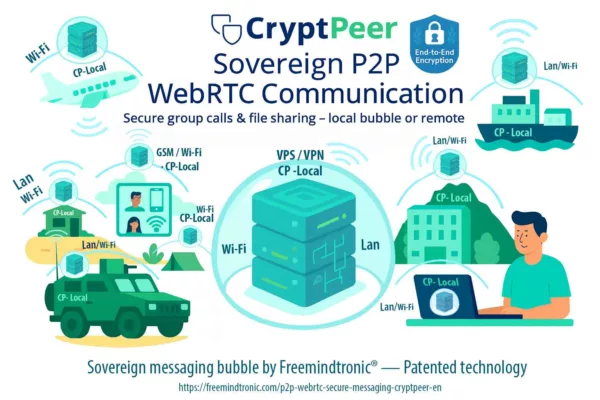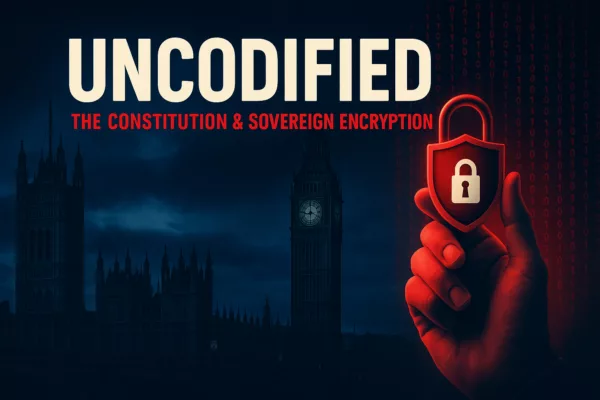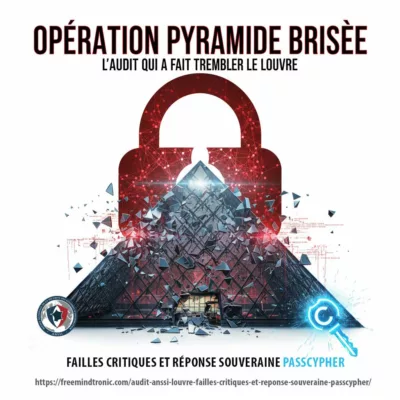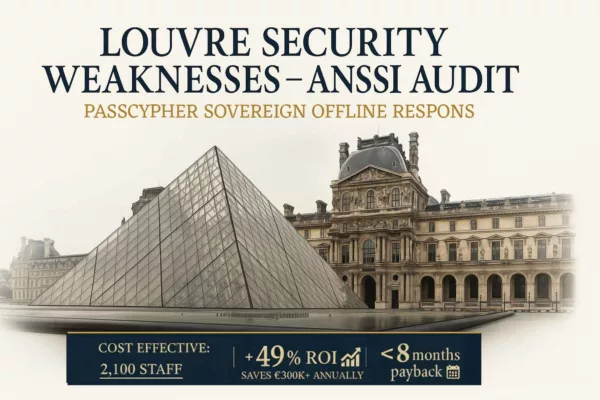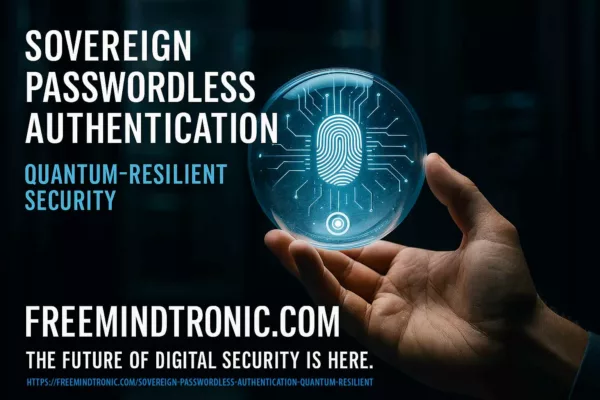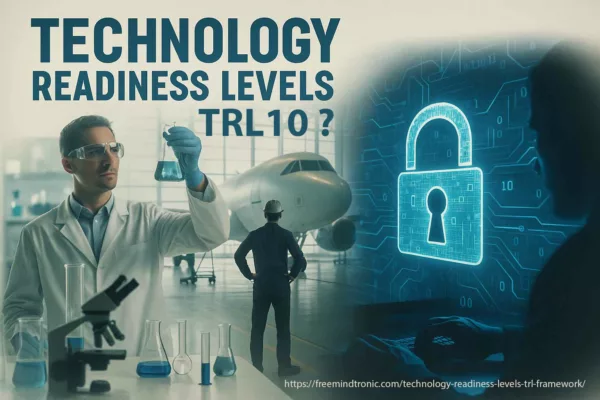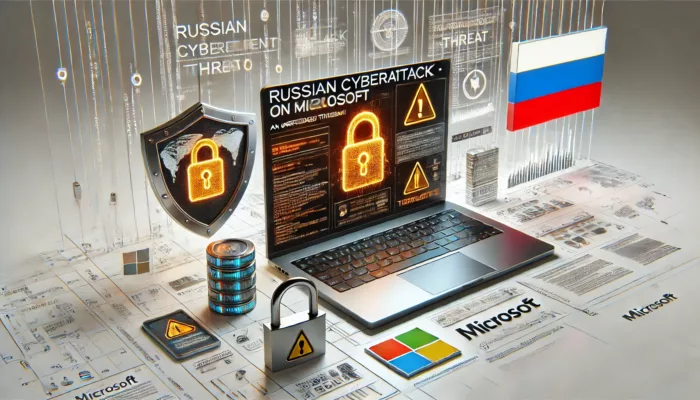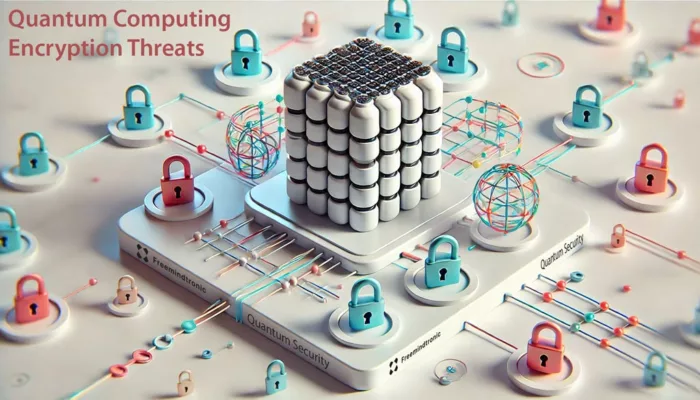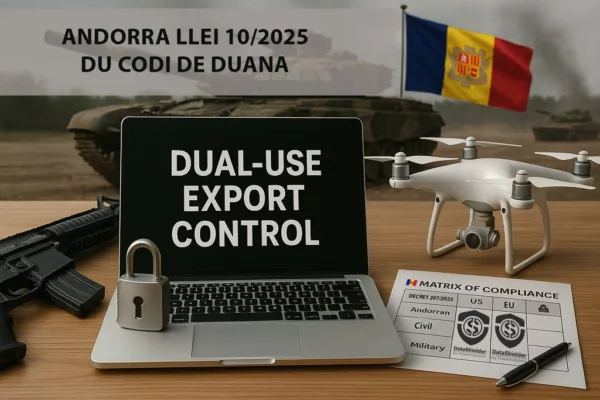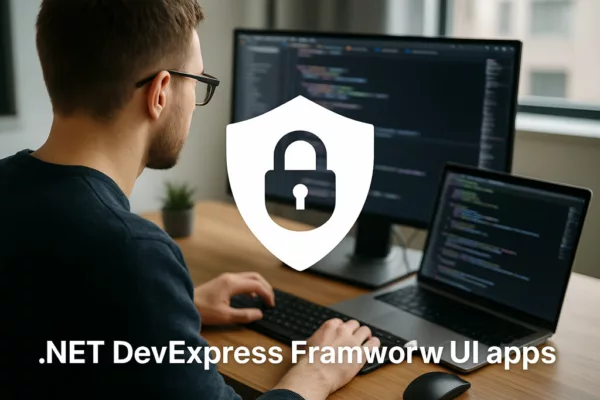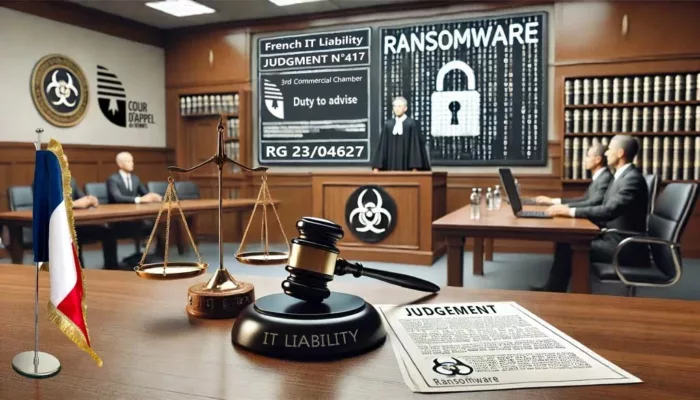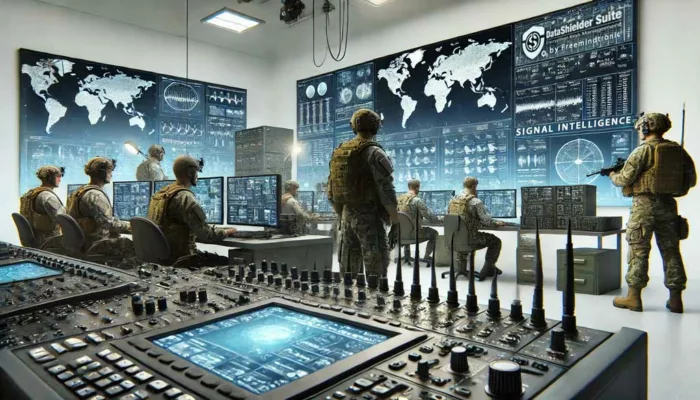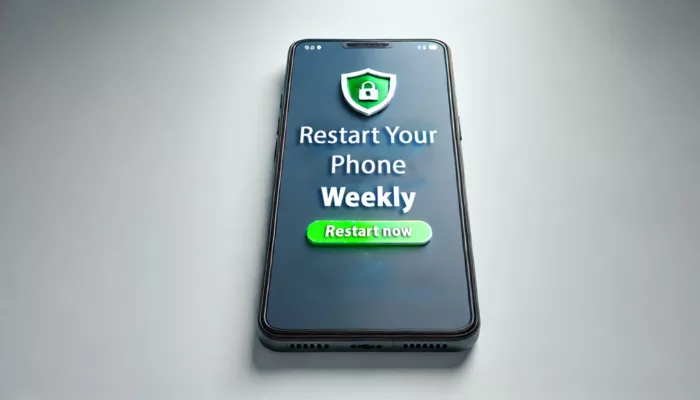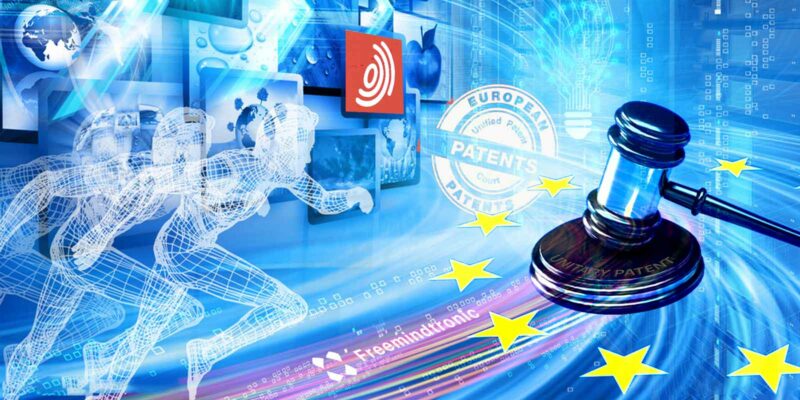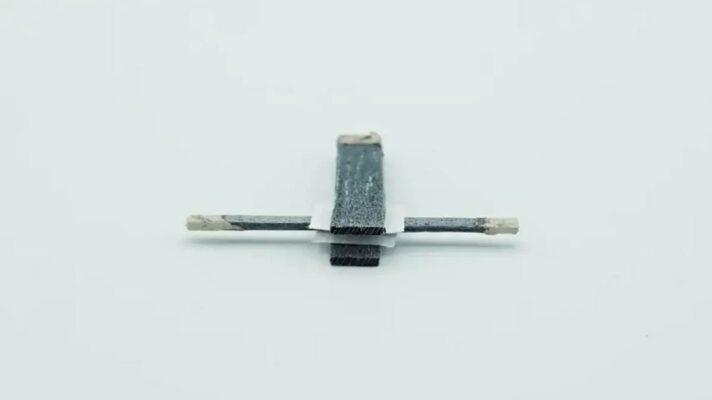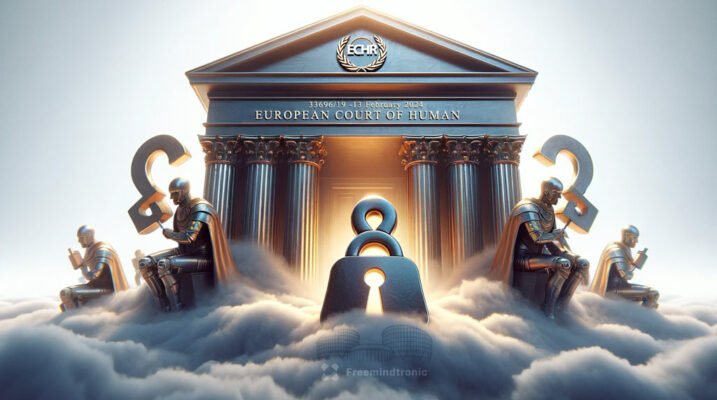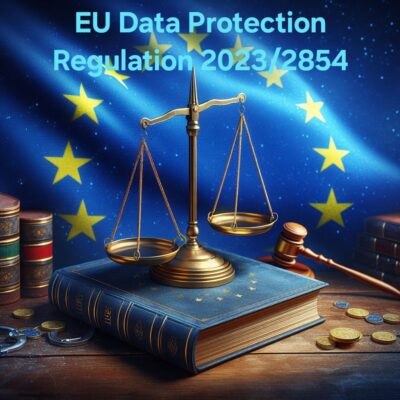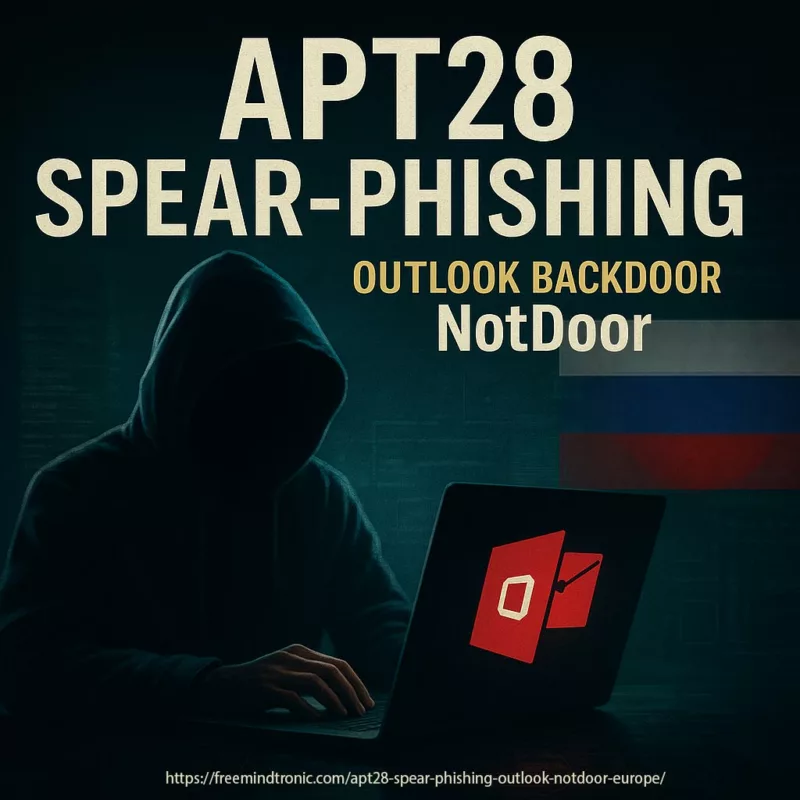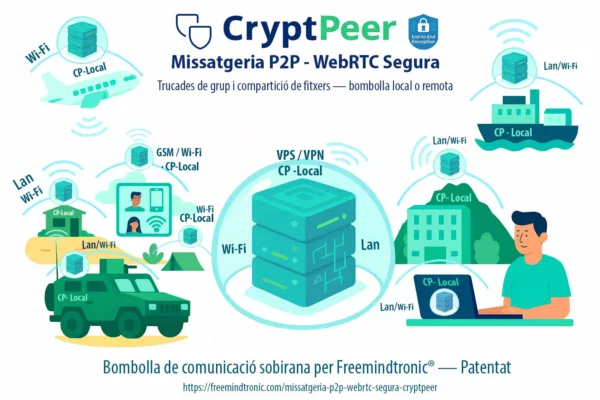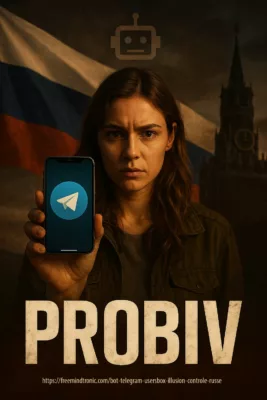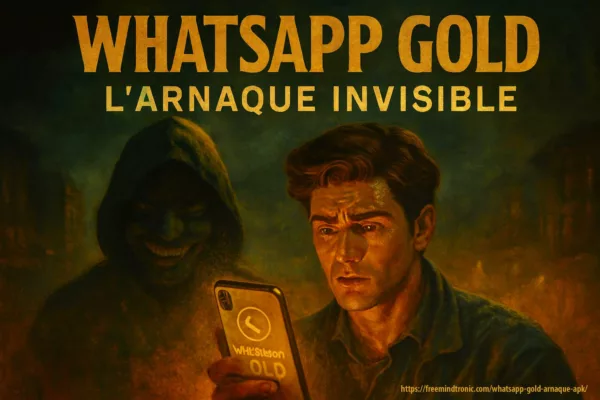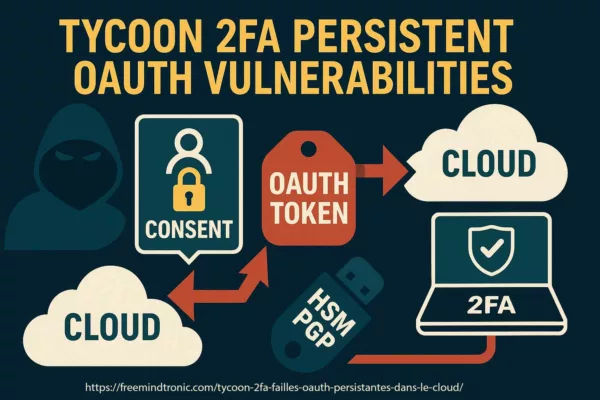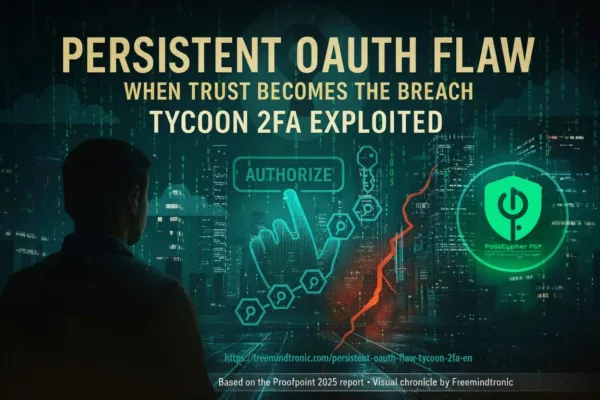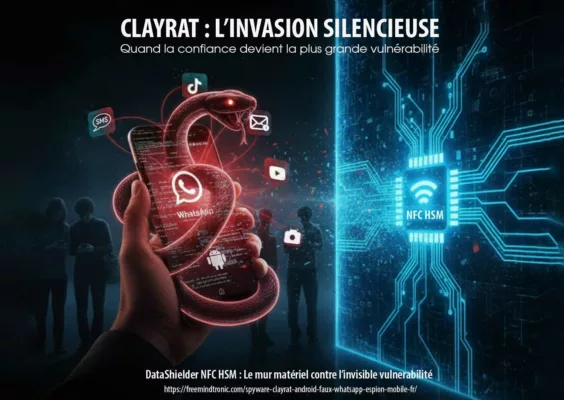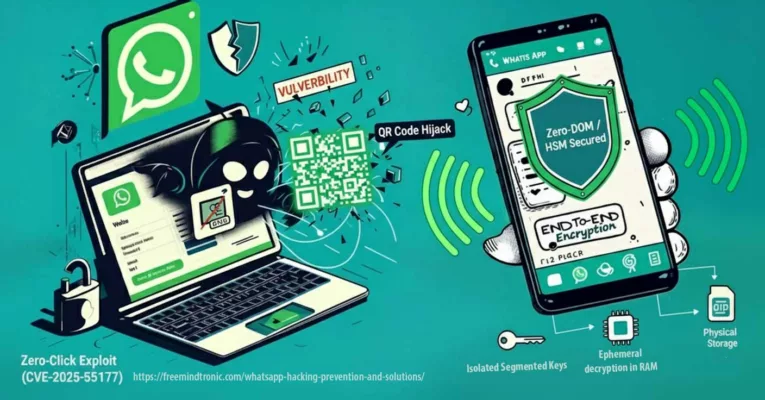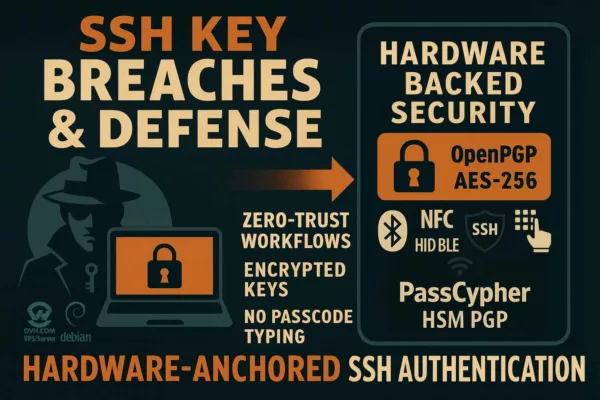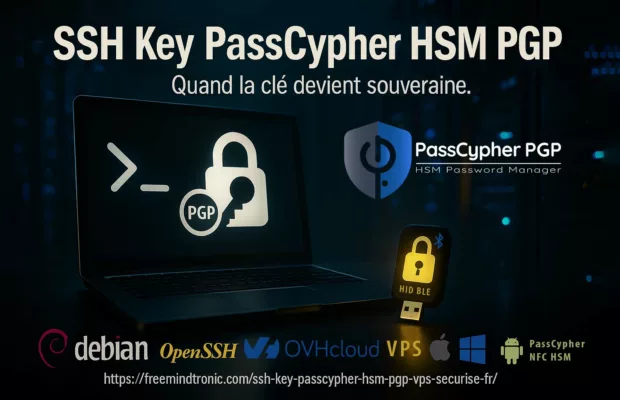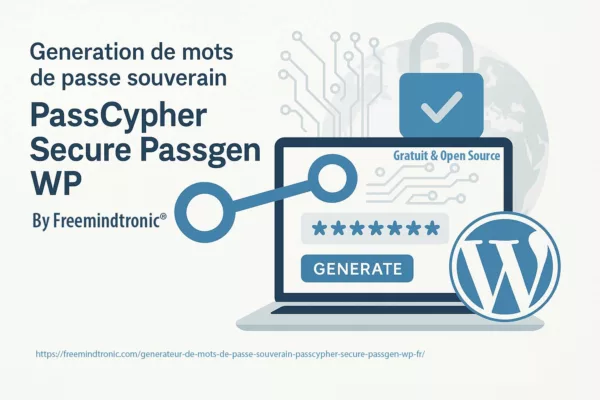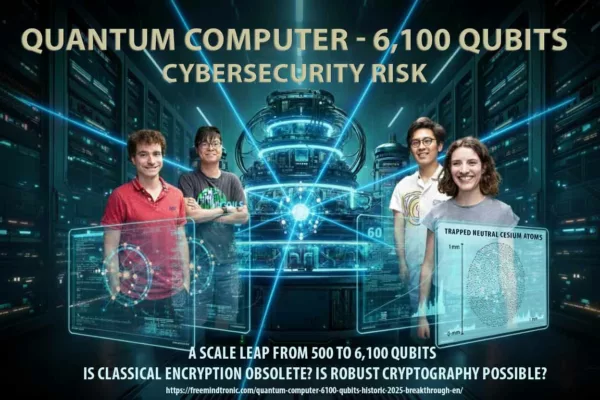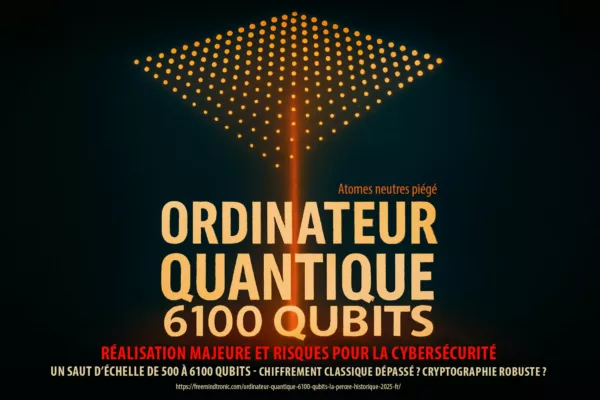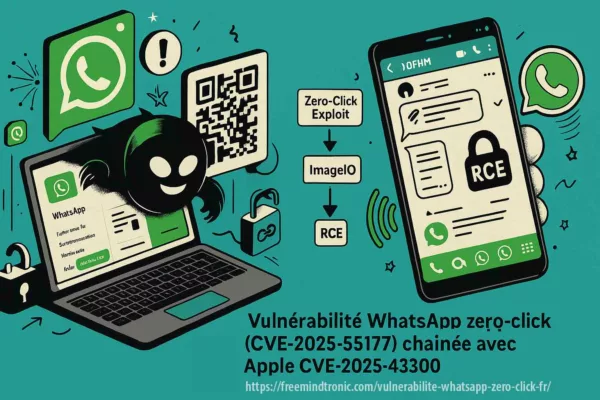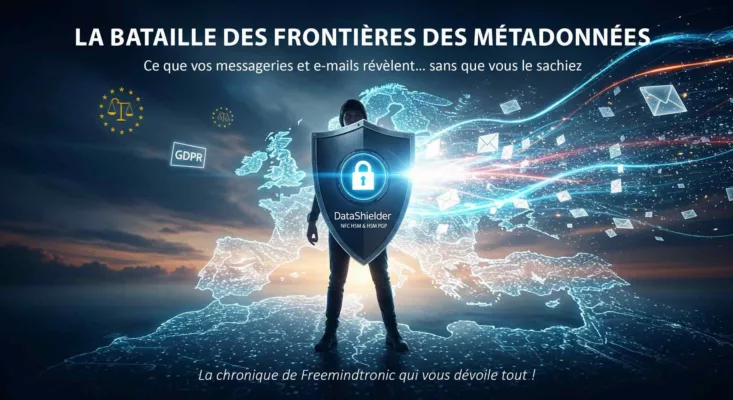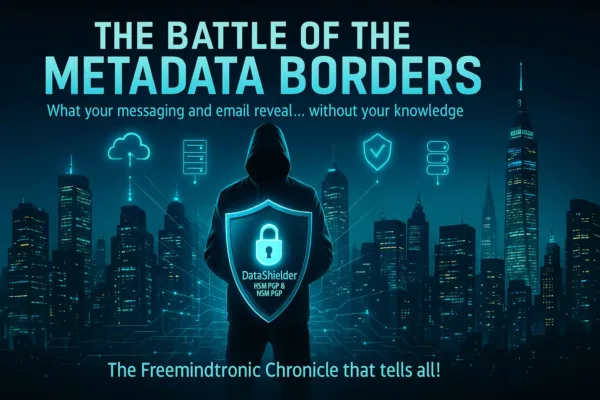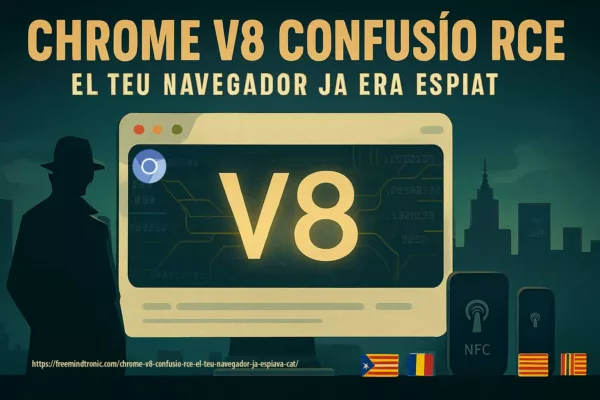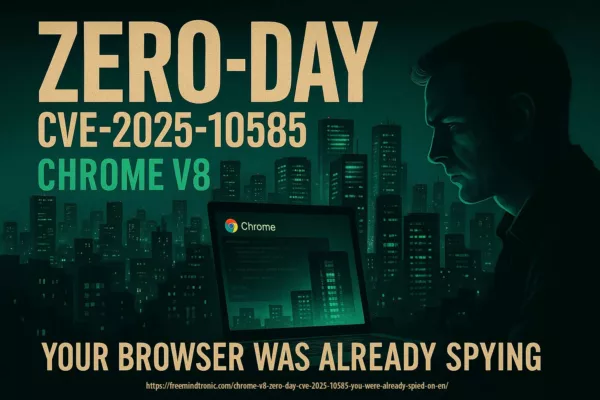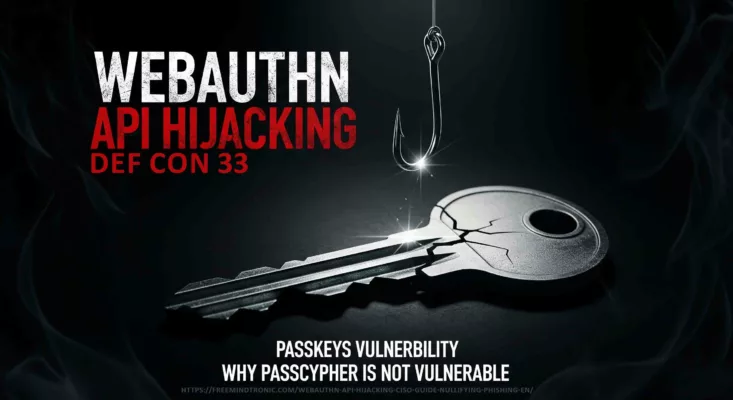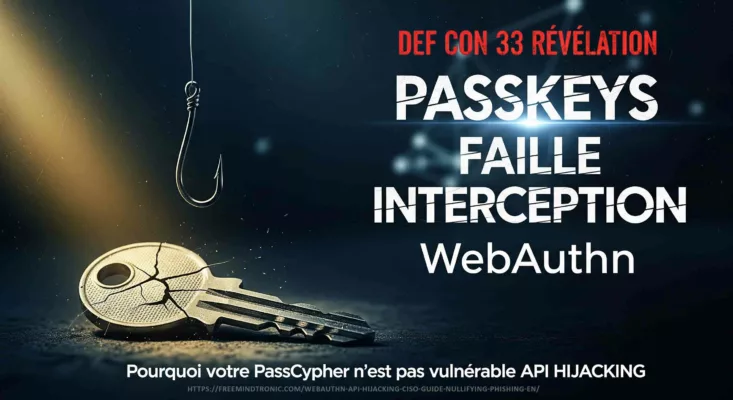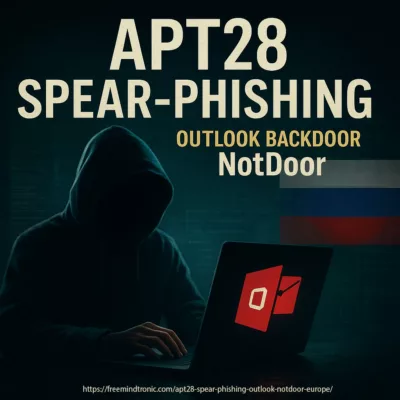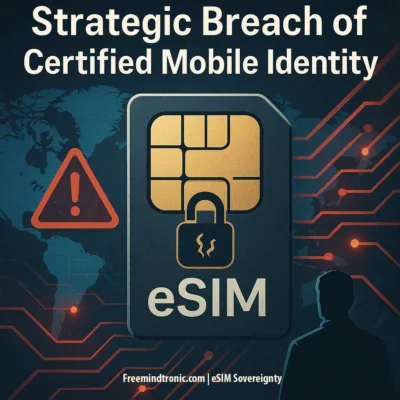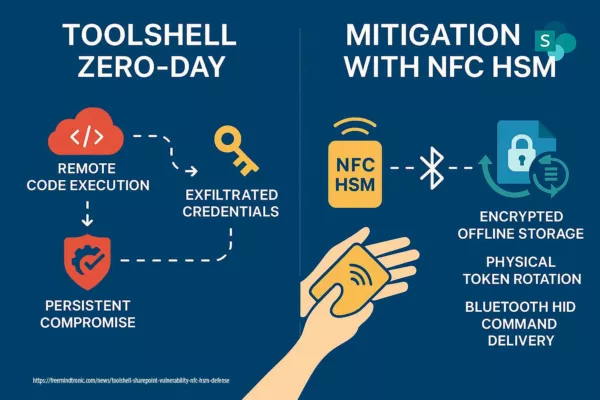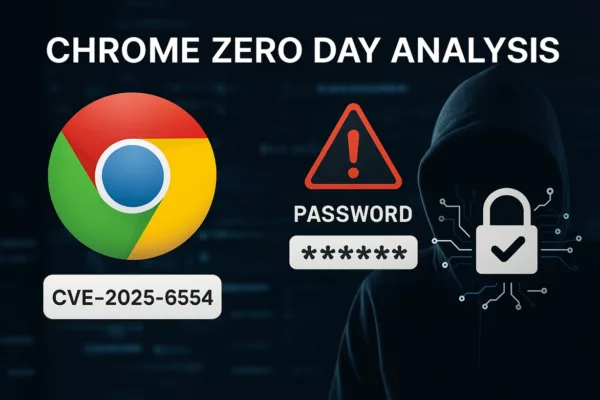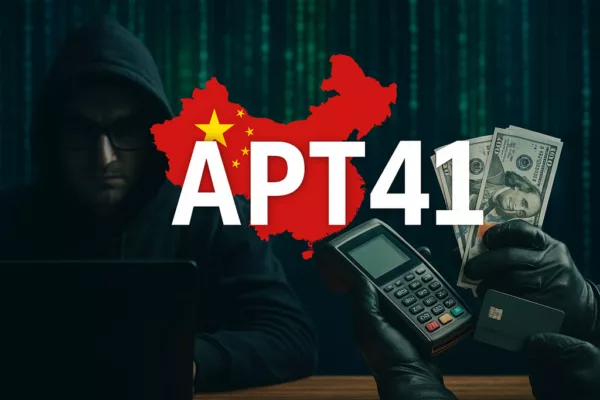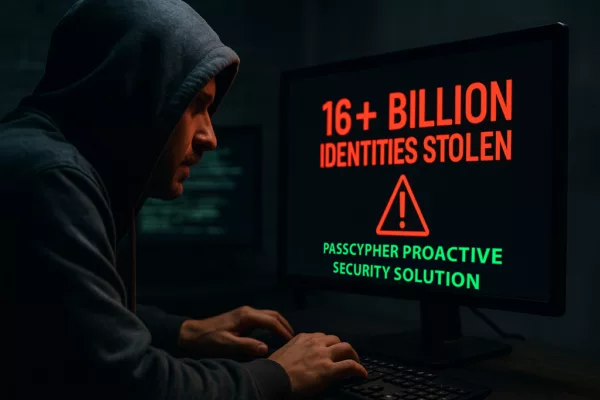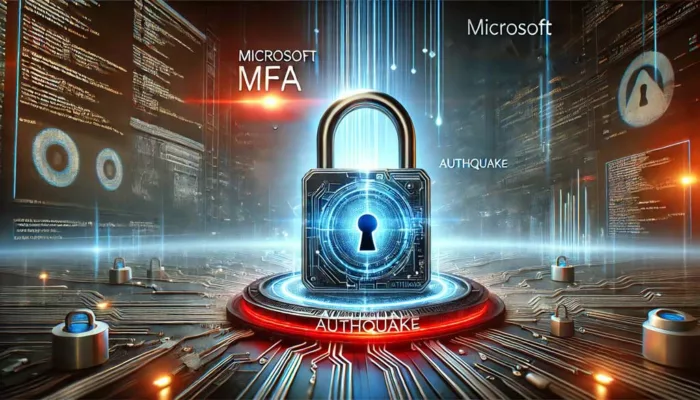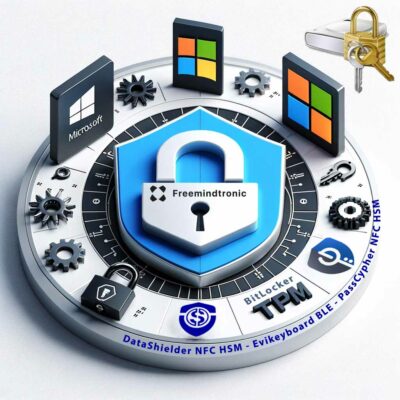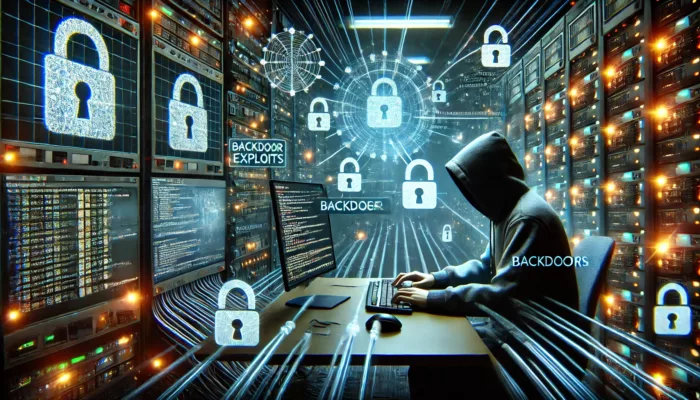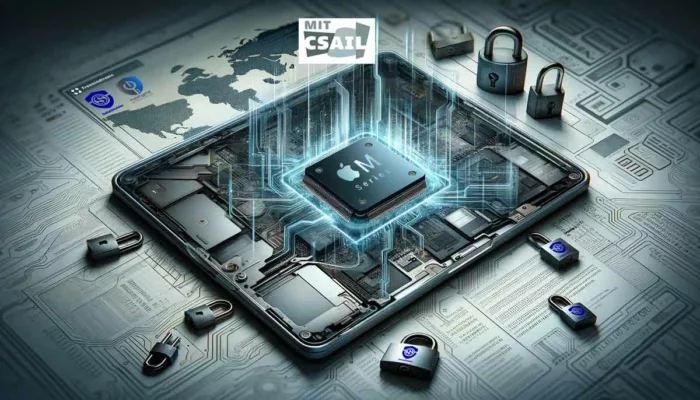Executive Summary
In the evolving landscape of hybrid warfare, reputation cyberattacks have emerged as a powerful asymmetric tool, targeting perception rather than systems. These operations exploit cognitive vectors—such as false narratives, controlled leaks, and media amplification—to destabilize trust in technologies, companies, or institutions. Unlike conventional cyberattacks, their purpose is not to penetrate networks, but to erode public confidence and strategic credibility. This Chronicle exposes the anatomy, intent, and implications of such attacks, offering sovereign countermeasures grounded in cryptographic attestation and narrative control.
Estimated reading time: 16 minutes
Complexity level: Strategic / Expert
Language specificity: Sovereign lexicon – High concept density
Accessibility: Screen reader optimized – all semantic anchors in place Navigation
In Cyberculture ↑ Correlate this Chronicle with other sovereign threat analyses in the same editorial rubric.
- Executive Summary
- Strategic Definition
- Typology of Reputation Attacks
- Event-Driven Triggers
- Threat Actor Mapping
- Geopolitical Embedding
- Sovereign Countermeasures
- Strategic Case Illustrations
- Intermediate & Legacy Cases
- Common Features & Strategic Objectives
- Strategic Outlook
- Narrative Warfare Lexicon
- Beyond This Chronicle
Strategic Navigation Index
Key insights include:
- Reputation attacks prioritize psychological and narrative impact over system access
- Controlled leaks and unverifiable claims simulate vulnerability without intrusion
- APT actors increasingly combine narrative warfare with geopolitical timing
- Sovereign countermeasures must address both runtime trust and narrative control
- Legal attribution, hybrid doctrines, and military exercises recognize the strategic threat
- IA-generated content and deepfake amplification heighten the reputational asymmetry
About the Author – Jacques Gascuel, inventor of internationally patented encryption technologies and founder of Freemindtronic Andorra, is a pioneer in sovereign cybersecurity. In this Cyberculture Chronicle, he deciphers the role of reputation cyberattacks in hybrid warfare and outlines a sovereign resilience framework based on NFC HSMs, narrative control, and runtime trust architecture.
Strategic Definition
Reputation cyberattacks are deliberate operations that undermine public trust in a targeted entity—governmental, industrial, or infrastructural—without necessitating technical penetration. Unlike classical cyberattacks, these actions do not seek to encrypt, extract, or manipulate data systems directly. Instead, they deploy orchestrated influence tactics to suggest compromise, provoke doubt, and corrode strategic credibility.
Key vectors include unverifiable claims of intrusion, dissemination of out-of-context or outdated data, and AI-generated content posing as evidence. These attacks are particularly insidious because they remain plausible without being technically demonstrable. Their targets are not systems but perceptions—clients, partners, regulators, and the broader strategic narrative.
Reputation cyberattacks weaponize doubt and narrative ambiguity. Their objective is not to compromise infrastructure but to simulate weakness, discredit governance, and manipulate perception within strategic timeframes.
Typology of Reputation Attacks
Reputation cyberattacks operate through carefully structured vectors designed to affect perception without direct intrusion. Their effectiveness stems from plausible ambiguity, combined with cognitive overload. Below is a strategic typology of the most commonly observed mechanisms used in such campaigns.
| Type of Attack | Method | Reputation Objective |
|---|---|---|
| Controlled Leak | Authentic or manipulated data exfiltration | Undermine trust in data integrity or governance |
| Narrative of Compromise | Unverifiable intrusion claim | Simulate vulnerability or technical failure |
| Amplified Messaging | Telegram, forums, rogue media | Pressure decision-makers via public reaction |
| False or Outdated Leaks | Repurposed legacy data as recent | Manipulate interpretation and chronology |
| Brand Cloning / Solution Usurpation | Fake products, clones, apps | Confuse trust signals and damage legitimacy |
Reputation attacks deploy asymmetric cognitive tactics that distort technical signals to generate public discredit. Their sophistication lies in the lack of verifiability and the strategic timing of narrative releases.
Event-Driven Triggers
Reputation cyberattacks rarely occur randomly. They are most often synchronized with sensitive diplomatic, commercial, or regulatory events, maximizing their narrative and psychological effect. These timings allow threat actors to amplify tension, delegitimize negotiations, or destabilize political outcomes with minimum technical effort.
The following correlations have been repeatedly observed across high-impact campaigns:
| Trigger Type | Typical Context | Observed Examples |
|---|---|---|
| Diplomatic Events | G7, NATO, BRICS, UNSC debates | Jean-Noël Barrot’s G7 breach via spyware |
| Contract Finalization | Strategic defense or tech exports | Naval Group leak during Indonesian negotiations |
| Critical CVE Disclosure | Zero-day or CVSS 9+ vulnerabilities | Chrome CVE-2025-6554 exploited alongside eSIM JavaCard leaks |
| Political Transitions | Election cycles, leadership change | GhostNet during 2009 leadership reshuffles in Asia |
| Telecom Infrastructure Breach | U.S. regulatory hearings on 5G security | Salt Typhoon breach of U.S. telecom infrastructure |
| Military Retaliation | India–Pakistan border escalation | APT36 campaign post-Pahalgam attack |
– Surge in Telegram disinformation threads one week before BRICS 2025 summit
– Anonymous claims targeting SM-DP+ infrastructures prior to Kigen certification review
– Attribution disclosures by 🇨🇿 Czechia and 🇬🇧 UK against APT31 and GRU respectively, correlating with vote censure periods
– Military-grade leaks repurposed via deepfake narratives hours before defense debates at the EU Parliament
Threat Actor Mapping
Several Advanced Persistent Threat (APT) groups have developed and deployed techniques specifically tailored to reputation disruption. These actors often operate under, or in coordination with, state objectives—using narrative projection as a form of geopolitical leverage. Freemindtronic has documented multiple such groups across past campaigns involving mobile identity, supply chain intrusion, and staged perception attacks.
| APT Group | Origin | Strategic Focus | Regalian Link |
|---|---|---|---|
| APT28 / Fancy Bear | Russia | Media influence, strategic sabotage | GRU |
| APT29 / Cozy Bear | Russia | Diplomatic espionage, discrediting campaigns | SVR |
| APT41 / Double Dragon | China | eSIM abuse, supply chain injection | MSS |
| Lazarus / APT38 | North Korea | Crypto theft, industrial denigration | RGB |
| APT36 / Transparent T. | Pakistan | Military perception ops, Android surveillance | ISI |
| OceanLotus / APT32 | Vietnam | Telecom narrative control, political espionage | Ministry of Public Security |
Weak Signals:
- Surge in Telegram threads 72h prior to geopolitical summits
- Anonymous code disclosures targeting certified infrastructure
- OSINT forums hinting at state-level leaks without attribution
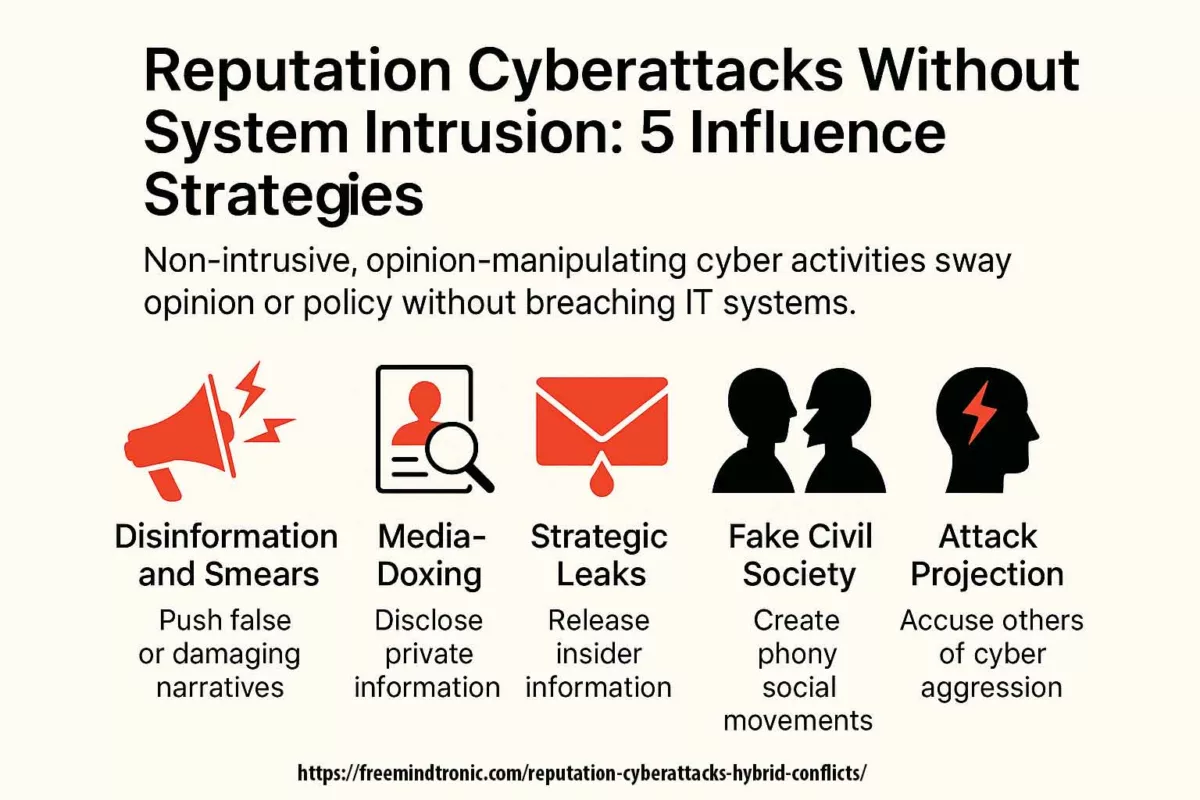
Timeline of Geopolitical Triggers and Corresponding Leaks
This sovereign timeline reveals how state-sponsored leak campaigns align tactically with geopolitical milestones, transforming passive narrative exposure into calibrated instruments of reputational destabilization.
| Date | Geopolitical Trigger | Leak Activity / APT Attribution |
|---|---|---|
| 11–12 June 2025 | NATO Summit | Massive credential dump via Ghostwriter |
| 18 July 2025 | U.S.–China Trade Talks | Strategic policy leak via Mustang Panda |
| 5 September 2025 | EU–Ukraine Association Agreement | Media smear leaks via Fancy Bear |
| 2 October 2025 | U.S. Sanctions on Russia | Source code exposure via Sandworm |
| 16 November 2025 | China–India Border Standoff | Fake news spike via RedEcho |
| 8 December 2025 | G7 Foreign Ministers’ Meeting | Diplomatic email leak via APT31 |
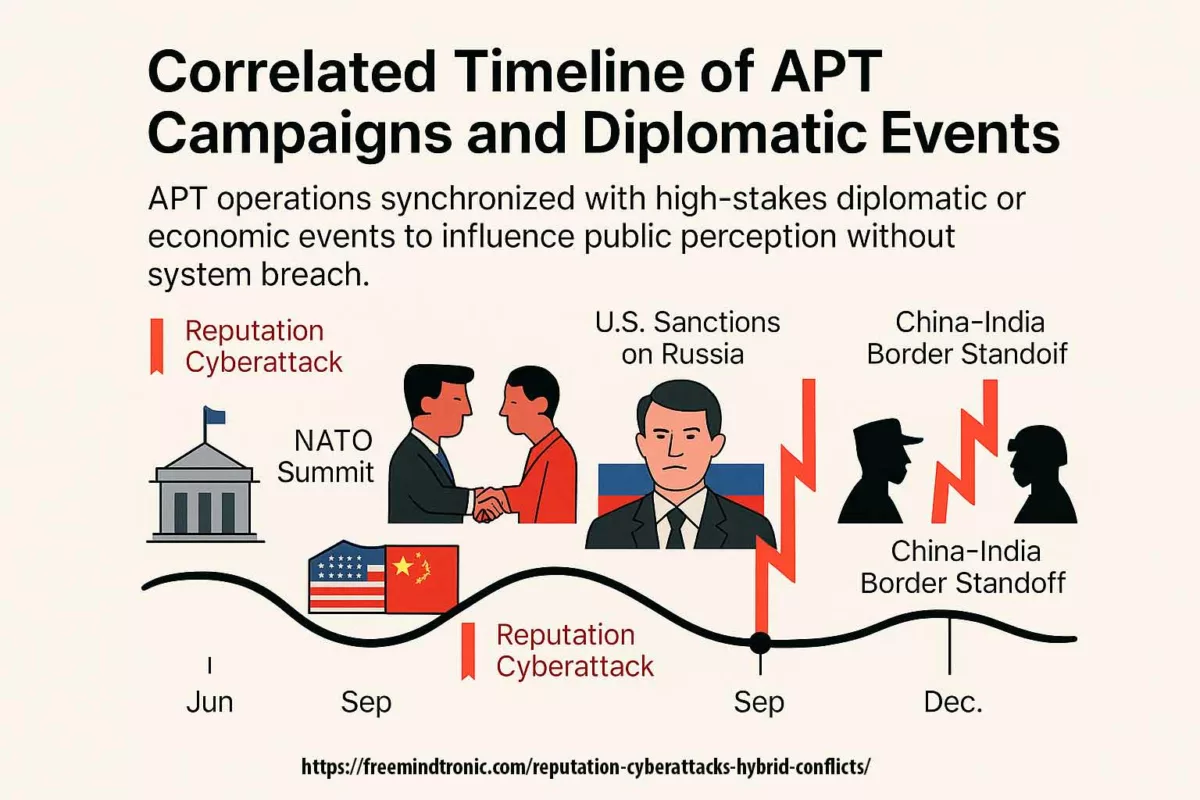
These APTs combine stealth, timing, and plausible deniability to weaponize trust decay. Their toolkit includes mobile clone propagation, certificate revocation simulation, and adversarial AI-driven content generation.
Medium Signals:
- Reactivation of domains previously linked to APT41 and APT36
- Spam waves targeting sectors previously affected (e.g., eSIM, military)
- Cross-platform narrative amplification combining Telegram, deepfakes, and dark web leaks
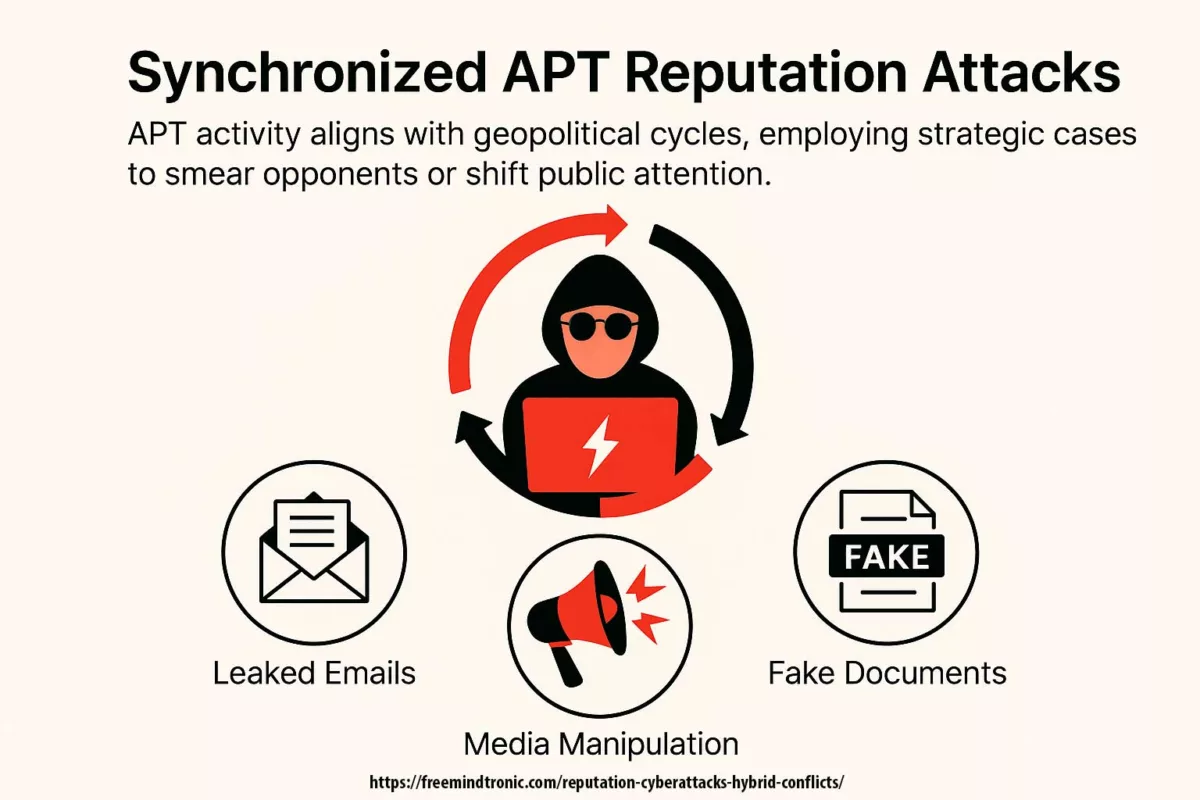
Geopolitical Embedding
Reputation cyberattacks are rarely isolated actions. They are often embedded within broader geopolitical manoeuvers, aligned with strategic objectives of national influence, dissuasion, or economic disruption. Below are detailed illustrations of how states integrate reputation-based cyber operations within their doctrine of influence.
🇷🇺 Russia – Narrative Sabotage and Attribution Management
APT28 and APT29 operate as complementary arms of Russian strategic disinformation. APT28 performs media amplification and tactical leaks, while APT29 infiltrates strategic diplomatic channels. Both benefit from GRU and SVR coordination, with plausible denial and a focus on exploiting trust asymmetries within European security frameworks.
🇨🇳 China – Espionage Hybridization and Runtime Subversion
APT41 is a paradigm of China’s fusion between state-sponsored espionage and monetized cybercrime. Their use of eSIM runtime abuse and compromised SM-DP+ provisioning chains illustrates a shift from direct intrusion to sovereignty degradation via runtime narrative manipulation. The Ministry of State Security provides structural protection and strategic targeting objectives.
🇰🇵 North Korea – Financial Subversion and Mobile Identity Hijacking
Lazarus Group (APT38) leverages breaches to undermine trust in certified systems. By targeting crypto wallets, blockchain nodes, and mobile identity providers, they transform technical compromise into economic destabilization narratives. These attacks often coincide with international sanctions debates or military exercises, and are directed by the Reconnaissance General Bureau (RGB).
🇵🇰 Pakistan – Military Psychological Pressure on India
APT36 deploys persistent mobile malware and SIM/eSIM spoofing against Indian military actors. These attacks are not solely technical; they aim to discredit Indian defense systems and pressure procurement diplomacy. The Inter-Services Intelligence (ISI) integrates these cyber tactics within regional destabilization agendas.
🇻🇳 Vietnam – Political Control via Telecom Targeting
OceanLotus (APT32) focuses on dissidents, journalists, and telecom infrastructure across ASEAN. Their aim is to dilute external perceptions of Vietnamese governance through discreet leaks and selective disclosure of surveillance capabilities. The Ministry of Public Security provides operational coverage and mission framing.
All of these actors embed their reputation attacks within state-approved strategic cycles. Cyberwarfare thus becomes an extension of diplomacy by other means—targeting trust, not terrain.
Sovereign Countermeasures
Defending against reputation cyberattacks requires more than perimeter security. Sovereign actors must combine cryptographic integrity enforcement, dynamic runtime assurance, and narrative discipline. Reputation attacks flourish in ambiguity—effective defense mechanisms must therefore be verifiable, attestable, and visible to the strategic environment.
Freemindtronic’s PassCypher NFC HSM / HSM PGP and DataShielder NFC HSM / HSM PGP exemplify sovereign countermeasures in action. Their air‑gapped hardware ensures that integrity attestations and encryption proofs are generated and verified at runtime—securely, transparently, and independently from compromised infrastructure.
Out-of-Band Attestation with NFC HSM
Architectures based on NFC HSMs (Hardware Security Modules) enable offline cryptographic proof of integrity and identity. These devices remain isolated from network vectors and can confirm the non-compromise of key credentials or components, even post-incident. Freemindtronic’s PassCypher NFC HSM, PassCypher HSM PGP, DataShielder NFC HSM and Datashielder HSM PGP technologies patented exemplify this paradigm.
Real-Time Message Provenance Control
DataShielder NFC HSM Auth et DataShielder NFC HSM M-Auth chiffrent toutes les communications par défaut, sur n’importe quel canal, à l’aide de clés matérielles souveraines qui ne peuvent pas être clonées, copiées ou extraites. Ce paradigme offre :
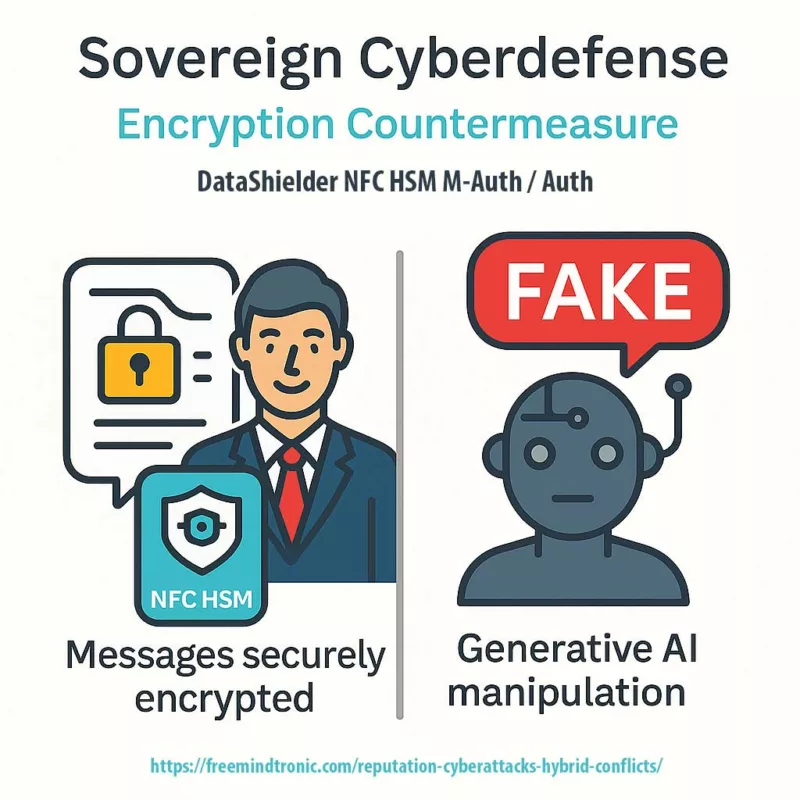
NFC HSM encryption draws a definitive boundary between authentic messages and fabricated narratives—making AI-forged disinformation both detectable and diplomatically indefensible.
- Verified encrypted messages sharply contrast with plaintext impersonations or unverifiable sources.
- Default encryption affirms authorship and message integrity without delay or user intervention.
- Falsehood becomes inherently visible, dismantling the ambiguity required for narrative manipulation.
This architecture enforces trust visibility by default—even across untrusted or compromised platforms—transforming every encrypted message into a sovereign proof of authenticity and every anomaly into a potential reputational alert.
Dynamic Certification & Runtime Audit
Static certification loses relevance once a component enters operational use. Reputation attacks exploit this gap by suggesting failure where none exists. Runtime certification performs real-time behavioural analysis, issuing updated trust vectors under sovereign control. Combined with policy-based revocation, this hardens narrative resilience.
Strategic Narrative Control
State entities and critical industries must adopt coherent, pre-structured public response strategies. The absence of technical breach must be communicated with authority and technical grounding. Naval Group’s qualified denial following its 2025 reputation leak demonstrates such sovereign narrative calibration under pressure.
This approach embodies dynamic certification, up to a temporal blockchain of trust. Unlike static attestations bound to deployment snapshots, sovereign systems like PassCypher NFC HSM and DataShielder NFC HSM perform ongoing behavioral evaluation—logging and cryptographically sealing runtime states.Each trust update can be timestamped, signed, and anchored in a sovereign ledger—transforming integrity into a traceable, irreversible narrative artifact. This not only preempts disinformation attempts but establishes a visible cryptographic chronicle that renders forgery diplomatically indefensible.
Sovereign cyberdefense means mastering time, integrity, and narrative. Out-of-band attestation and dynamic certification are not just security features—they are diplomatic weapons in an asymmetric reputational battlefield.
Strategic Case Illustrations
Reputation cyberattacks are no longer incidental. They are increasingly doctrinal, mirroring psyops in hybrid conflicts and weaponizing cognitive ambiguity. Below, we analyze three emblematic case studies where strategic visibility became a vulnerability—compromised not by code, but by coordinated narratives.
Morocco — CNSS Data Breach & Reputational Impact (April 2025)
- Major incident: In April 2025, Morocco’s National Social Security Fund (CNSS) experienced what is widely described as the largest cyber incident in the country’s digital history. The breach exposed personal data of approximately 2 million individuals and 500,000 enterprises, including names, national IDs, salaries, emails, and banking details. [Content verified via: moroccoworldnews.com, therecord.media, resecurity.com]
- Claimed attribution: The Algerian group JabaRoot DZ claimed responsibility, citing retaliation for an alleged breach of the APS (Algerian Press Service) account by Moroccan-linked actors.
- Technical vulnerability: The attack reportedly exploited “SureTriggers,” a WordPress module used by public services that auto-connects to Gmail, Slack, and Google APIs—identified as a likely vector in the incident.
- Collateral effects: The breach prompted temporary shutdowns of key Moroccan ministerial websites (Education, Tax), and government portals were disabled as a preventive cybersecurity measure. [Confirmed via moroccoworldnews.com]
- Institutional response: The NGO Transparency Maroc publicly criticized the lack of disclosure, urging authorities to release investigation findings and audit results to restore public confidence under data protection law 09‑08.
- Continental context: Kaspersky ranked Morocco among Africa’s top cyberattack targets, registering more than 12.6 million cyber threats in 2024, with significant increases in spyware and data exfiltration attempts.
The Moroccan breach illustrates the duality of hybrid threats: a massive technical compromise coupled with reputational erosion targeting public trust. By compromising legitimate governmental interfaces without penetrating core infrastructures, this attack typifies silent reputation warfare in a sovereign digital context.
United Kingdom — Reputation Warfare & Cyber Sabotage (2025)
- Contextual trigger: In May 2025, the UK government formally accused Russian GRU units 26165, 29155, and 74455 of coordinating cyber sabotage and influence operations targeting Western democracies, including the 2024 Paris Olympics and Ukrainian allies. The attribution was backed by the UK’s National Cyber Security Centre (NCSC). [gov.uk — Official Statement]
- Narrative dimension: Public attribution functions as a geopolitical signaling strategy—reasserting institutional legitimacy while projecting adversarial intent within a hybrid warfare doctrine.
- Institutional framing: The UK’s NCSC framed the attacks as hybrid campaigns combining technical compromise, reputational disruption, and online disinformation vectors. [NCSC Report]
The UK case underscores how naming threat actors publicly becomes a sovereign narrative tool—transforming attribution from defensive posture into reputational counterstrike within hybrid strategic doctrine.
Australia & New Zealand — AI‑Driven Reputation Campaigns & SME Disruption (2025)
- Threat escalation: In its July 2025 cyber threat bulletin, CyberCX raised the national threat level from “low” to “moderate” due to increased attacks by pro‑Russia and pro‑Iran hacktivists targeting SMEs and trust anchors. [CyberCX Report]
- AI impersonation cases: The Australian Information Commissioner reported a rise in deepfake voice-based impersonation (“vishing”) affecting brands like Qantas, prompting enhanced institutional controls. [OAIC Notifiable Data Breaches Report]
- Asymmetric reputational vectors: These campaigns leverage low-cost, high-impact impersonation to seed public distrust—especially effective when targeting service-based institutions with high emotional value.
In Australia and New Zealand, deepfake-enabled vishing attacks exemplify the evolution of hybrid threats—where brand trust, rather than infrastructure resilience, becomes the primary vector of reputational compromise.
Côte d’Ivoire — Symbolic Rise in Targeted Attacks (2024–2025)
- Threat profile: In 2024, Côte d’Ivoire recorded 7.5 million cyberattack attempts, including 60 000 identity theft attempts targeting civilian services, military infrastructures, electoral registries, and digital payment platforms.
- Targets: Military, electoral systems, and digital payment systems—underscoring both technical and narrative-driven attack vectors.
- Electoral context (2025): Ahead of the October presidential election, major opposition figures—including Tidjane Thiam, Laurent Gbagbo, Charles Blé Goudé, and Guillaume Soro—were excluded from the final candidate list published on 4 June 2025.
- List finality: The Independent Electoral Commission (CEI), led by Coulibaly‑Kuibiert Ibrahime, announced no further revision of the electoral register would occur before the vote..
- Narrative risk vector: The legal exclusion combined with a fixed submission window (July 25–August 26) constructs a narrow, information‑scarce environment—ideal for reputation attacks via bogus leaks, document falsification, or spoofed portals.
- Strategic interpretation: The limited electoral inclusivity and rigid timelines magnify potential narrative manipulation by actors seeking to simulate fraud or institutional incapacity.
- Sources: Reuters reports (June 4, 2025 – candidate exclusions) ; CEI confirmation of no further register revision :content.
In Côte d’Ivoire, structural cyber intrusions in 2024 and systemic electoral restrictions in 2025 converge into a hybrid threat environment: narrative ambiguity becomes a strategic tool, allowing reputation-based operations to undermine institutional credibility without requiring technical compromise.
AFJOC — Coordinated Regional Cyber Defense (Africa, 2025)
- Continental response: INTERPOL’s 2025 African Cyberthreat Report calls for regional coordination via AFJOC (Africa Joint Operation against Cybercrime).
- Threat evolution: AI-driven fraud, ransomware, and cybercrime-as-a-service dominating the threat landscape.
- Strategic implication: Highlights the necessity of sovereign runtime attestation and regional policy synchronization.
- Source: INTERPOL Africa Cyber Report 2025
AFJOC exemplifies a pan-African response to hybrid cyber threats—moving beyond technical patchwork to coordinated defense governance. Its operational scope highlights runtime integrity as a sovereign imperative.
Naval Group — Strategic Exposure via Reputation Leak
- Modus operandi: “Neferpitou” publishes 13 GB of allegedly internal data, claims 1 TB tied to Naval CMS systems, coinciding with high-level Indo-Pacific negotiations.
- Sovereign framing: Naval Group dismisses technical breach, insists on reputational targeting.
- Narrative vulnerability: Ambiguous provenance (possible reuse of Thales 2022 breach), lack of forensic certitude fuels speculation and diplomatic pressure.
- Systemic insight: CMS systems’ visibility within defense industry increases attack surface despite zero intrusion.
Naval Group’s incident shows how reputation can be decoupled from system security—exposure of industrial branding alone suffices to pressure negotiations, irrespective of intrusion evidence.
Dassault Rafale — Disinformation Post-Skirmish and Trust Erosion
- Tactic: Synthetic loss narratives post-Operation Sindoor. Gameplay footage (ARMA 3), AI-enhanced visuals, and bot networks flood social media.
- Strategic intent: Shift procurement trust toward Chinese J-10C alternatives. Undermine India-France defense collaboration.
- Corporate response: Dassault CEO publicly debunks losses; Indian MoD affirms Rafale superiority.
- Attack vector: Exploits latency in real-world combat validation versus immediate online simulation. Tempo differential becomes narrative leverage.
Dassault’s case highlights digital asymmetry: speed of synthetic disinformation outpaces real-time refutation. Trust erosion occurs before fact-checking stabilizes perceptions.
Kigen eSIM — Certified Component, Runtime Failure, Sovereign Breach
- Flawed certification chain: Java Card vulnerability in GSMA-certified Kigen eUICC enables runtime extraction of cryptographic keys and profiles.
- Collateral impact: >2 billion devices vulnerable across consumer, industrial, and automotive sectors.
- Strategic blind spots: TS.48 test profile lacks runtime attestation, no revocation mechanism, no post-deployment control layer.
- Geopolitical exploitation: APT41 and Lazarus repurpose cloned eSIM profiles for state-level impersonation and tracking.
- Sovereign countermeasure: NFC HSM runtime attestation proposed to separate dynamic trust from static certification.
Kigen illustrates how certification without runtime guarantees collapses in sovereign threat contexts. Attestation must be dynamic, portable, and verifiable—independent of issuing authority.
Israel–Iran — Predatory Sparrow vs Deepfake Sabotage
- Israeli offensive: In June 2025, Predatory Sparrow disrupted the digital services of Iran’s Sepah Bank, rendering customer operations temporarily inoperative.
- Iranian retaliation: Fake alerts, phishing campaigns, and deepfake operations aimed at creating panic.
- Narrative warfare: Over 60 pro-Iranian hacktivist groups coordinated attacks to simulate financial collapse and fuel unrest.
- Source: DISA escalation report
This conflict pair showcases dual-track warfare: targeted digital disruption of critical banking infrastructure, countered by synthetic information chaos designed to manipulate public perception and incite instability.
Intermediate & Legacy Cases
Recent campaigns reveal a growing sophistication in reputation cyberattacks. However, foundational cases from previous years still shape today’s threat landscape. These legacy incidents actively illustrate persistent vectors—ransomware amplification, unverifiable supply chain compromises, and narrative manipulation—that inform current defense strategies.
Change Healthcare Ransomware Attack (USA, 2024)
- Attack type: Ransomware combined with political reputational sabotage
- Immediate impact: Threat actors exposed over 100 million sensitive medical records, causing $2.9 billion in direct losses and paralyzing healthcare payments for weeks
- Narrative shift: The breach transformed into a media symbol of systemic vulnerability in U.S. healthcare infrastructure, influencing regulatory debates
- Source: U.S. HHS official statement
SolarWinds Software Supply Chain Breach (USA, 2020)
- Attack type: Covert infiltration through compromised update mechanism
- Systemic breach: APT29 infiltrated U.S. federal networks, including the Pentagon and Treasury, sparking concerns over supply chain certification trust
- Strategic consequence: Cybersecurity experts advocated for zero-trust architectures and verified software provenance policies
- Source: CISA breach alert
Colonial Pipeline Critical Infrastructure Sabotage (USA, 2021)
- Attack type: Ransomware disrupting fuel distribution logistics
- Operational impact: The attack triggered massive fuel shortages across the U.S. East Coast, igniting panic buying and public anxiety
- Narrative angle: Policymakers used the incident to challenge America’s energy independence and highlight outdated infrastructure protections
- Source: FBI attribution report
Estée Lauder Cloud Security Exposure (2020)
- Incident type: Public cloud misconfiguration without encryption
- Data disclosed: 440 million log entries surfaced online; none classified as sensitive but amplified for reputational damage
- Narrative exploitation: Media outlets reframed the incident as emblematic of weak corporate data governance, despite its low-risk technical scope
- Source: ZDNet technical analysis
GhostNet Global Cyber Espionage Campaign (2009)
- Origin point: China
- Infiltration method: Long-range surveillance across embassies, ministries, and NGOs in over 100 countries
- Reputational effect: The attack revealed the reputational power of invisible espionage and framed global cyber defense urgency
- Source: Archived GhostNet investigation
Signal Clone Breach – TeleMessage Spoofing Campaign (2025)
- Vector exploited: Brand mimicry and codebase confusion via Signal clone
- Security breach: Attackers intercepted communications of diplomats and journalists, casting widespread doubt on secure messaging apps
- Source: Freemindtronic breach analysis
Change Healthcare — Systemic Paralysis via Ransomware
- Incident: In February 2024, the ransomware group Alphv/BlackCat infiltrated Change Healthcare, disrupting critical healthcare operations across the United States.
- Impact: Over 100 million medical records exposed, halting prescription services and claims processing nationwide.
- Reputational fallout: The American Hospital Association labeled it the most impactful cyber incident in U.S. health system history.
- Aftermath: A $22 million ransom was paid; projected losses reached $2.9 billion.
Snowflake Cloud Breach — Cascading Reputation Collapse
- Event: In April 2024, leaked credentials enabled the Scattered Spider group to access customer environments hosted by Snowflake.
- Affected parties: AT&T (70M users), Ticketmaster (560M records), Santander Bank.
- Strategic gap: Several Snowflake tenants had no multi-factor authentication enabled, revealing governance blind spots.
- Reputational impact: The breach questioned shared responsibility models and trust in cloud-native zero-trust architectures.
Salt Typhoon APT — Metadata Espionage and Political Signal Leakage
- Threat actor: Salt Typhoon (Chinese APT), targeting U.S. telecoms (AT&T, Verizon).
- Tactics: Passive collection of call metadata and text records involving politicians such as Donald Trump and JD Vance.
- Objective: Narrative manipulation through reputational subversion and diplomatic misattribution.
- Official coverage: Documented by U.S. security agencies, cited in Congressional Research Service report IF12798.
Legacy is not just history; it’s doctrine.
Common Features & Strategic Objectives
Despite their varied execution, reputation cyberattacks exhibit a set of common features that define their logic, timing, and psychological impact. Recognizing these patterns allows sovereign actors and industrial targets to anticipate narrative shaping attempts and embed active countermeasures within their digital resilience strategy.
Common Features
- Non-technical vectors: Some attacks do not involve system compromise—only plausible disinformation or brand usurpation.
- Perception-centric: They aim at clients, partners, regulators—not infrastructure.
- Strategic timing: Aligned with high-value geopolitical, economic, or regulatory events.
- Narrative instruments: Use of Telegram, forums, deepfakes, AI-generated content, and synthetic media.
- Attribution opacity: Exploits legal and technical gaps in global cyber governance.
Strategic Objectives
- Erode trust in sovereign technologies or industrial actors
- Influence acquisition, regulation, or alliance decisions
- Create asymmetric narratives favoring the attacker
- Delay, deflect, or preempt defense procurement or certification
- Prepare cognitive terrain for future technical or diplomatic intrusion
Reputation cyberattacks blur the lines between cybersecurity, psychological operations, and diplomatic sabotage. Their prevention requires integration of threat intelligence, strategic communications, and runtime trust mechanisms.
Common Features & Strategic Objectives
Despite their varied execution, reputation cyberattacks exhibit a set of common features that define their logic, timing, and psychological impact. Recognizing these patterns allows sovereign actors and industrial targets to anticipate narrative shaping attempts and embed active countermeasures within their digital resilience strategy.
Common Features
- Non-technical vectors: Some attacks do not involve system compromise—only plausible disinformation or brand usurpation.
- Perception-centric: They aim at clients, partners, regulators—not infrastructure.
- Strategic timing: Aligned with high-value geopolitical, economic, or regulatory events.
- Narrative instruments: Use of Telegram, forums, deepfakes, AI-generated content, and synthetic media.
- Attribution opacity: Exploits legal and technical gaps in global cyber governance.
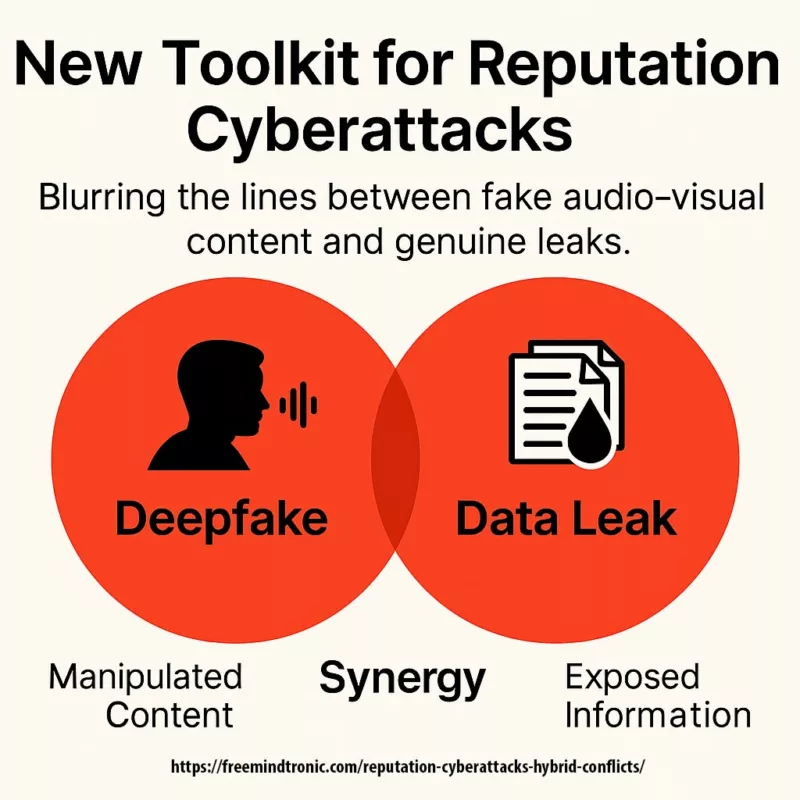
Strategic Outlook
Reputation cyberattacks are no longer peripheral threats. They operate as strategic levers in hybrid conflicts, capable of delaying negotiations, undermining certification, and shifting procurement diplomacy. These attacks are asymmetric, deniable, and narrative-driven. Their true target is sovereignty—technological, diplomatic, and communicational.
The challenge ahead is not merely one of defense, but of narrative command. States and sovereign technology providers must integrate verifiable runtime trust, narrative agility, and resilience to perception distortion. Silence is no longer neutrality; it is vulnerability.
Strong Signals:
- Coordinated leaks following high-level diplomatic statements
- Multiple unverifiable claims against certification authorities
- Escalation in deepfake dissemination tied to defense technologies
Imagine a defense consortium deploying a real-time, attested HSM-based runtime environment that logs and cryptographically proves system integrity in air-gapped mode. A leaked document emerges, claiming operational failure. Within 48 hours, the consortium publishes a verifiable attestation proving non-compromise—transforming a potential discredit into a sovereign show of digital force.
To sustain trust in the era of information warfare, sovereignty must be demonstrable—technically, legally, and narratively.
Narrative Warfare Lexicon
To fortify sovereign understanding and strategy, this lexicon outlines key concepts deployed throughout this chronicle. Each term reflects a recurring mechanism of hybrid influence in reputation-centric cyber conflicts.
Sovereign Attestation:
Verifiable proof of message origin and integrity, enforced by hardware-based cryptography and runtime sealing mechanisms.
Perception Latency:
Delay between technical compromise and public interpretation, allowing adversaries to frame or distort narratives in real-time.
Runtime Ambiguity:
Exploitation of unverified system states or certification gaps during live operation, blurring accountability boundaries.
Trusted Silence:
Intentional lack of institutional response to unverifiable leaks, contrasted by provable data integrity mechanisms.
Strategic Leakage:
Deliberate release of curated data fragments to simulate broader compromise and provoke institutional panic.
Attested Narrative Artifact:
Communication whose authenticity is cryptographically enforced and auditably traceable, independent of central validation.
Adversarial Framing:
Use of metadata, linguistic bias, or visual overlays to recontextualize legitimate content into hostile perception.
Out-of-Band Attestation (NFC HSM):
Isolated cryptographic proof of key integrity, resistant to network manipulation. These air-gapped modules independently enforce the origin and authenticity of communications.
Real-Time Integrity Proof:
Continuous sealing and audit of system states during live operation. Prevents the exploitation of momentary ambiguity or delay in narrative framing.
Dynamic Certification:
Adaptive verification mechanism that evolves with runtime behavior. Unlike static seals, it updates the trust status of components based on real-time performance and sovereign policy triggers.
Temporal Blockchain of Trust:
Time-stamped ledger of cryptographically sealed events, where each proof of integrity becomes a narrative checkpoint. This chained structure forms a verifiable, sovereign memory of truth—resilient against falsification or post-hoc reinterpretation.
Temporal Ledger of Attestation:
A chronologically ordered record of integrity proofs, allowing for verifiable reconstruction of system trust state over time. Especially useful in forensic or diplomatic contexts.
Runtime Proof Anchoring:
Technique by which runtime attestation outputs are immediately sealed and anchored in sovereign repositories, ensuring continuity and traceability of system integrity.
Distributed Sovereign Chronicle:
Federated attestation system in which multiple sovereign or institutional nodes validate and preserve cryptographic proofs of trust, forming a geopolitical ledger of resilience against coordinated narrative subversion.
Beyond This Chronicle
The anatomy of invisible cyberwars is far from complete. As sovereign digital architectures evolve, new layers of hybrid reputational threats will emerge—possibly automated, decentralized, and synthetic by design. These future vectors may combine adversarial AI, autonomous leak propagation, and real-time perception manipulation across untrusted ecosystems.
Tracking these tactics will require more than technical vigilance. It will demand:
- Runtime sovereignty: Systems must cryptographically attest their integrity in real time, independent of external validators.
- Adversarial lexicon auditing: Monitoring how language, metadata, and synthetic narratives are weaponized across platforms.
- Neutral trust anchors: Deploying hardware-based cryptographic roots that remain verifiable even in contested environments.
Freemindtronic’s work on DataShielder NFC HSM and PassCypher HSM PGP exemplifies this shift. These technologies enforce message provenance, runtime attestation, and sovereign encryption—transforming each communication into a verifiable narrative artifact.
Future chronicles will deepen these vectors through:
- Case convergence: Mapping how reputation attacks evolve across sectors, regions, and diplomatic cycles.
- Technological foresight: Anticipating how quantum-safe cryptography, AI-generated disinformation, and decentralized identity will reshape the reputational battlefield.
- Strategic simulation: Modeling sovereign response scenarios to reputational threats using attested environments and synthetic adversaries.
In the next phase, reputation defense will not be reactive—it will be declarative. Sovereignty will be demonstrated not only through infrastructure, but through narrative control, cryptographic visibility, and strategic timing.
Russian cyberattack on Microsoft by Midnight Blizzard (APT29) highlights the strategic risks to digital sovereignty. Discover how the group exploited password spraying, malicious OAuth applications, and legacy exposure — and the sovereign countermeasures offered by DataShielder and PassCypher.
Executive Summary — APT28 spear-phishing in Europe
⚡ Objective
Understand how APT28 spear-phishing campaigns exploit Outlook VBA macro phishing, the NotDoor backdoor, DLL side-loading via OneDrive.exe, and HeadLace loaders to achieve stealth access, data theft, and lateral movement across European infrastructures.
💥 Scope
Targets include French ministries, NATO-linked entities, critical infrastructure operators, research centers, BITD companies, and organizers of the Paris 2024 Olympics. The focus: Outlook-centric intrusion chains and their detection through behavioral monitoring.
🔑 Doctrine
APT28 favors short-lived, stealthy intrusions. Defenders must enforce Outlook hardening, disable macros, monitor anomalous OUTLOOK.EXE child processes and OneDrive.exe DLL loads, and inspect encrypted mail flows (e.g., Proton Mail covert exfiltration). Sovereign encryption HSMs ensure end-to-end protection.
🌍 Strategic Differentiator
Unlike cloud MFA or purely software-based solutions, DataShielder and PassCypher adopt a zero cloud, zero disk, zero DOM posture: offline encapsulation, volatile-memory decryption only, and offline credential custody.
Result ⮞ resilient spear-phishing defense, neutralization of Outlook backdoor channels, and data sovereignty across the European cyber landscape.
Technical Note
Reading time (summary): ≈ 4 minutes
Reading time (full): ≈ 30 minutes
Level: Cyber threat intelligence / SecOps
Posture: Behavior-first detection, sovereign authentication
Category: Digital Security
Available languages: FR · EN · CAT · ES
Editorial type: Chronicle
About the author: Jacques Gascuel — Inventor of Freemindtronic®, specialist in sovereign HSM architectures, offline key segmentation, and resilient communication security. He develops dual-use encryption technologies (civil/military) officially recognized in Europe, and publishes strategic chronicles on APT cyber-espionage and digital sovereignty.
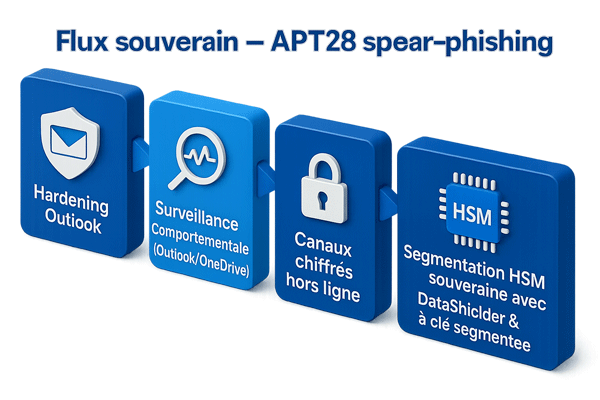
This chronicle belongs to the Digital Security section and contributes to Freemindtronic’s sovereign operational toolbox (HSM, offline segmentation, resilient communication).
- Executive Summary — APT28 spear-phishing
- APT28 spear-phishing France: a persistent pan-European threat
- Other APT28 campaigns between CVE-2023-23397 and NotDoor
- Historical Context: The Evolution of APT28
- Priority targets for APT28 spear-phishing campaigns
- Spear-phishing and electoral destabilization in Europe
- NotDoor: Outlook backdoor
- APT28 malware matrix
- ANSSI’s operational recommendations
- Regulatory framework: French response
- Sovereign solutions: DataShielder & PassCypher
- Threat coverage: PassCypher & DataShielder
- Towards a European cyber-resilience strategy
- Evolution of APT28 spear-phishing campaigns (2014–2025)
- Sovereign Use Case — Outlook backdoor neutralized
- Official Report — CERTFR-2025-CTI-006
- What We Didn’t Cover — Next chapters
- Weak Signals — Trends to watch
APT28 spear-phishing France: a persistent pan-European threat
APT28 spear-phishing France now represents a critical digital security challenge on a European scale. Since 2021, several European states, including France, have faced an unprecedented intensification of spear-phishing campaigns conducted by APT28, a state-sponsored cyber-espionage group affiliated with Russia’s GRU. Also known as Fancy Bear, Sednit, or Sofacy, APT28 targets ministries, regional governments, defense industries, strategic research institutions, critical infrastructure, and organizations involved with the Paris 2024 Olympic Games. This analysis details an APT28 Outlook backdoor pathway and defensive countermeasures.
In a tense geopolitical context across Europe, APT28’s tactics are evolving toward stealthy, non-persistent attacks using malware like HeadLace and exploiting zero-day vulnerabilities such as CVE-2023-23397 in Microsoft Outlook. This vulnerability, detailed in a CERT-FR alert (CERTFR-2023-ALE-002), allows an attacker to retrieve the Net-NTLMv2 hash, potentially for privilege escalation. It is actively exploited in targeted attacks and requires no user interaction, being triggered by sending a specially crafted email with a malicious UNC link. This trend mirrors tactics used by APT44, explored in this article on QR code phishing, underscoring the need for sovereign hardware-based tools like DataShielder and PassCypher. European CISOs are encouraged to incorporate these attack patterns into their threat maps.
Historical Context: The Evolution of APT28
APT28 (Fancy Bear) has been active since at least 2004, operating as a state-sponsored cyber-espionage group linked to Russia’s GRU. However, its most heavily documented and globally recognized operations emerged from 2014 onward. That year marks a strategic shift, where APT28 adopted more aggressive, high-visibility tactics using advanced spear-phishing techniques and zero-day exploits.
Between 2008 and 2016, the group targeted several major geopolitical institutions, including:
• The Georgian Ministry of Defense (2008)
• NATO, the White House, and EU agencies (2014)
• The U.S. presidential election campaign (2016)
This period also saw extensive exposure of APT28 by cybersecurity firms such as FireEye and CrowdStrike, which highlighted the group’s growing sophistication and its use of malicious Word documents (maldocs), cloud-based command-and-control (C2) relays, and coordinated influence operations.
These earlier campaigns laid the foundation for APT28’s current operations in Europe — especially in France — and illustrate the persistent, evolving nature of the threat.
Priority targets for APT28 spear-phishing campaigns
Target typology in APT28 campaigns
APT28 targets include:
- Sovereign ministries (Defense, Interior, Foreign Affairs)
- Paris 2024 Olympics organizers and IT contractors
- Operators of vital importance (OIVs): energy, transport, telecoms
- Defense industrial and technological base (BITD) companies
- Research institutions (CNRS, INRIA, CEA)
- Local governments with strategic competencies
- Consulting firms active in European or sensitive matters
Historical Context: The Evolution of APT28
APT28 (Fancy Bear) has been active since at least 2004, operating as a state-sponsored cyber-espionage group linked to Russia’s GRU. However, its most heavily documented and globally recognized operations emerged from 2014 onward. That year marks a strategic shift, where APT28 adopted more aggressive, high-visibility tactics using advanced spear-phishing techniques and zero-day exploits.
Between 2008 and 2016, the group targeted several major geopolitical institutions, including:
- The Georgian Ministry of Defense (2008)
- NATO, the White House, and EU agencies (2014)
- The U.S. presidential election campaign (2016)
This period also saw extensive exposure of APT28 by cybersecurity firms such as FireEye and CrowdStrike, which highlighted the group’s growing sophistication and its use of malicious Word documents (maldocs), cloud-based command-and-control (C2) relays, and coordinated influence operations.
These earlier campaigns laid the foundation for APT28’s current operations in Europe — especially in France — and illustrate the persistent, evolving nature of the threat.
Spear-phishing and electoral destabilization in Europe
Political and geopolitical context of APT28 campaigns
APT28’s campaigns often precede key elections or diplomatic summits, such as the 2017 French presidential election, the 2019 European elections, or the upcoming Paris 2024 Olympic Games. These are part of a broader hybrid strategy aimed at destabilizing the EU.
Some spear-phishing attacks are synchronized with disinformation operations to amplify internal political and social tensions within targeted nations. This dual tactic aims to undermine public trust in democratic institutions.
Reference: EU DisinfoLab – Russia-backed disinformation narratives
Germany and NATO have also reported a resurgence of APT28 activities, particularly against NATO forces stationed in Poland, Lithuania, and Estonia. This strategic targeting of European institutions is part of a broader effort to weaken collective security in the EU.
Other APT28 campaigns between CVE-2023-23397 and NotDoor
Between the Outlook zero-day CVE-2023-23397 and the emergence of the NotDoor Outlook backdoor, APT28 sustained a steady cadence of precision intrusions. The group leveraged widely deployed enterprise software to deliver APT28 spear-phishing chains at scale, moving from classic maldocs to Outlook-centric compromise and covert exfiltration.
| Vulnerability | Attack type | Target | APT28 usage |
|---|---|---|---|
| CVE-2023-38831 | Malicious ZIP (WinRAR exploit) | Diplomatic & defense sectors | Weaponized archives in targeted phishing; payload staging and credential theft |
| CVE-2021-40444 | ActiveX exploit (MSHTML) | NATO-linked institutions | Malicious Word documents embedding ActiveX to gain initial code execution |
| CVE-2023-23397 | Outlook zero-day | Energy & transport operators | Zero-click NTLM material theft enabling relay and lateral movement |
Takeaway. These campaigns show a tactical progression from maldoc & archive abuse toward Outlook-centric backdoors, culminating with NotDoor’s Outlook VBA macro phishing, DLL side-loading via OneDrive.exe, and Proton Mail covert exfiltration.
NotDoor: a new Outlook backdoor in APT28’s toolchain
OneDrive.exe DLL side-loading and encrypted mail exfiltration. Detections pivot on Outlook child-process chains, macro creation, and anomalous OneDrive module loads.NotDoor represents a tactical leap in APT28 spear-phishing chains: instead of only abusing delivery vectors, the operators weaponize Microsoft Outlook itself. A malicious VBA macro hooks mailbox events, watches for keyword triggers in new mail, and—on match—executes commands, stages files, and exfiltrates data. This Outlook-centric backdoor blends with daily workflows, reduces telemetry noise, and undermines perimeter detections.
How the backdoor operates
- Initial foothold: Outlook VBA macro phishing seeded via targeted messages or trust-store abuse (macro-enabled project in the user profile).
- Mailbox surveillance: event handlers monitor incoming emails for operator tasking (e.g., “Daily Report”, “Timesheet”, summit- or exercise-themed lures).
- Tasking & execution: the macro launches system commands, enumerates files and mailbox items, compresses artifacts, and uploads follow-on payloads.
- Defense evasion: DLL side-loading via OneDrive.exe loads a malicious library behind a trusted Microsoft binary to degrade signature-based controls.
- Covert egress: Proton Mail covert exfiltration camouflages outbound traffic among legitimate encrypted flows.
Where NotDoor fits vs HeadLace & CVE-2023-23397
| Capability | HeadLace | CVE-2023-23397 (Outlook) | NotDoor |
|---|---|---|---|
| Primary role | Loader / C2 staging | Zero-click credential material theft | Outlook-resident backdoor (VBA) |
| Initial trigger | Spear-phishing + droppers | Crafted Outlook item (MAPI reminder) | Mailbox keyword match on new mail |
| Operator actions | Payload delivery, beaconing | NTLM relay → lateral movement | Command exec, file upload, selective exfiltration |
| Key evasions | Cloud relays; short-lived infra | Abuses client processing path | OneDrive.exe DLL side-loading; encrypted mail channel |
| Detections |
|
||
Detection & hunts (behavior-first)
- Macro exposure: disable Outlook VBA by policy; alert on macro project creation/enable in Office trust stores.
- Process chains: flag
OUTLOOK.EXEspawning script interpreters, archivers, or shells; correlate with mailbox event timing. - Side-loading: monitor
OneDrive.exemodule loads from non-system paths; detect unsigned or unexpected DLLs co-located with it. - Mailflow anomalies: DLP/heuristics for sudden encrypted egress to privacy providers from workstation hosts; compressed archives leaving via mail.
- Keyword intel: hunt for mailbox rules/macros using operational terms (e.g., “report”, “invoice”, exercise names, event code-words).
MITRE ATT&CK mapping (core techniques)
- T1204 — User Execution: malicious file/macro (Outlook VBA project)
- T1059 — Command & Scripting Interpreter (cmd/PowerShell/WScript)
- T1574.002 — Hijack Execution Flow: DLL Side-Loading (
OneDrive.exe) - T1041 — Exfiltration Over C2 Channel (encrypted mail channel)
Operational hardening (sovereign posture)
- Harden Outlook (disable macros by default; restrict trusted locations; block unsigned VBA).
- Instrument Outlook/OneDrive behaviors and alert on risky child-process or module-load patterns.
- Adopt sovereign email encryption HSM: use DataShielder HSM PGP for end-to-end encryption with volatile-memory decryption only; pair with PassCypher HSM PGP for offline OTP/credential custody.
APT28 attribution and espionage objectives
- Attribution: Main Intelligence Directorate (GRU), Unit 26165
- Key techniques: Targeted phishing, Outlook vulnerabilities, compromise of routers and peripheral devices
- Objectives: Data exfiltration, strategic surveillance, disruption of critical operations
APT28 also coordinates technical operations with information warfare: fake document distribution, disinformation campaigns, and exploitation of leaks. This “influence” component, though less covered in mainstream reports, significantly amplifies the impact of technical attacks.
Observed campaigns and methods (2022–2025)
| Date | Campaign | Targets | Impact |
|---|---|---|---|
| March 2022 | Diplomatic phishing | EU ministries | Theft of confidential data |
| July 2023 | Military campaign | French and German forces | Access to strategic communications |
| Nov. 2024 | HeadLace & CVE exploit | Energy sector | Risk of logistical sabotage |
| April 2025 | Olympics 2024 operation | French local authorities | Compromise of critical systems |
🔗 See also: ENISA Threat Landscape 2024 – Cyberespionage Section
Mapping APT28 to the Cyber Kill Chain
| Kill Chain Step | Example APT28 |
| Reconnaissance | DNS scanning, 2024 Olympic monitoring, WHOIS tracking |
| Weaponization | Doc Word piégé (maldoc), exploit CVE-2023-23397 |
| Delivery | Spear-phishing by email, fake ..fr/.eu domains |
| Exploitation | Macro Execution, Outlook Vulnerability |
| Installation | Malware HeadLace, tunnels cloud (Trello, Dropbox) |
| C2 | GitHub relay, DNS Fast Flux |
| Actions on Obj. | Exfiltration, disinformation coordinated with DCLeaks |
Tactics and Infrastructure: Increasing Sophistication
APT28 campaigns are distinguished by a high degree of stealth:
- Domain spoofing via homographs (e.g. gov-fr[.]net).
- Real-time payload encryption.
- Using legitimate cloud services like GitHub, Dropbox, or Trello as a C2 relay.
- Hosting on anonymized infrastructures (Fast Flux DNS, bulletproof hosting).
- Non-persistent attacks: ephemeral access, rapid exfiltration, immediate wipe. This approach makes detection particularly complex, as it drastically reduces the window of opportunity for forensic analysis, and the attacker’s infrastructure is often destroyed rapidly after compromise.
This mastery of technical obfuscation makes detection particularly complex, even for the most advanced SIEM systems and EDRs.
Evolution of APT28 spear-phishing campaigns (2014–2025)
This timeline highlights the major APT28 spear-phishing offensives in Europe, from early credential harvesting and the 2017 Macron campaign to Microsoft Outlook exploits in 2020 and large-scale energy sector intrusions culminating in 2025.
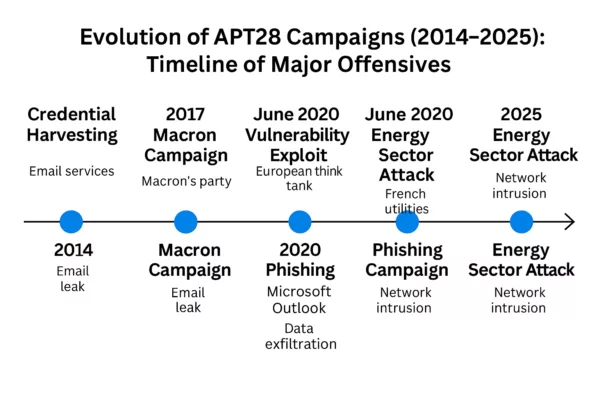
APT28 spear-phishing timeline (2014–2025) — Key campaigns include credential harvesting, the 2017 Macron leak, Outlook phishing exploits in 2020, and critical infrastructure attacks in the European energy sector through 2025.
APT28 malware matrix (Outlook-centric chains)
This matrix summarizes the Outlook-focused toolchain observed in APT28 spear-phishing campaigns, highlighting purpose, triggers, evasions, and succinct detections to operationalize hunts.
| Tool / Vector | Purpose | Initial trigger | Key evasions | Notes |
|---|---|---|---|---|
| CVE-2023-23397 (Outlook) | Zero-touch credential material theft | Crafted Outlook item (MAPI reminder) | Abuses client processing path; no user click | Enables NTLM relay & lateral movement |
| Detections | Outlook items with reminder props to UNC; anomalous NTLM right after item processing; spikes in external SMB/NTLM auth. | |||
| HeadLace | Loader / staging / C2 | Document lure or dropper delivered via spear-phishing | Cloud relays; short-lived infrastructure | Used for quick-strike access and payload delivery |
| Detections | Unusual OUTLOOK.EXE or user apps spawning LOLBins; beaconing to GitHub/Trello; transient staging dirs; signed-binary proxy exec. |
|||
| NotDoor (Outlook VBA) | Outlook-resident backdoor | Mailbox keyword match on new mail | OneDrive.exe DLL side-loading; encrypted mail channel | Command exec, file upload, selective exfiltration |
| Detections | Outlook macro enable/create events; OUTLOOK.EXE spawning cmd/powershell/wscript; OneDrive.exe loading DLLs from user-writable paths; encrypted egress to privacy providers (e.g., Proton Mail). |
|||
Official report — CERTFR-2025-CTI-006
Title: Targeting and compromise of French entities using APT28 tradecraft
Publisher: CERT-FR (ANSSI) — 29 April 2025
- Scope: Analysis of APT28 campaigns against French government, diplomatic and research bodies (2021–2024), with spillover to wider Europe.
- Attribution: APT28 (Fancy Bear / Sofacy), linked to Russia’s GRU Unit 26165.
- Key TTPs: Targeted spear-phishing, Outlook abuse (incl. CVE-2023-23397), short-dwell intrusions, cloud C2 relays, coordinated information ops.
- Operational risks: Credential theft → lateral movement; data exfiltration; disruption potential for critical operators.
- Defensive priorities: Patch hygiene; macro hardening; behavior monitoring for
OUTLOOK.EXE/OneDrive.exe; DLP on encrypted egress; ATT&CK mapping for hunts (T1204, T1059, T1574.002, T1041).
Links — Official page: CERTFR-2025-CTI-006 · Full PDF: download
Takeaway — The report corroborates the shift of APT28 spear-phishing toward Outlook-centric chains and reinforces the need for behavior-first detection and sovereign encryption/HSM controls.
ANSSI’s operational recommendations
OUTLOOK.EXE/OneDrive.exe, DLP on encrypted egress, and sovereign HSMs for sensitive exchanges and credentials.- Apply security patches (known CVEs) immediately.
- Audit peripheral equipment (routers, appliances).
- Deploy ANSSI-certified EDRs to detect anomalous behavior.
- Train users with realistic spear-phishing scenarios.
- Segment networks and enforce the principle of least privilege.
- Disable Outlook VBA macros by default via group policy; restrict Office trusted locations; block unsigned macros.
- Instrument Outlook & OneDrive process behavior: alert on
OUTLOOK.EXEspawning script interpreters and onOneDrive.exeloading DLLs from non-system paths. - Mailflow controls: DLP/heuristics for unexpected encrypted egress to privacy providers (e.g., Proton Mail) from workstation hosts.
- Sovereign channeling for sensitive comms: use DataShielder HSM PGP to end-to-end encrypt messages with volatile-memory decryption only; pair with PassCypher HSM PGP for offline OTP/credential custody.
- Threat hunting: search for anomalous Outlook rules/macros, compressed archives in sent items, and keyword-based mailbox automations.
- Map NotDoor hunts to MITRE ATT&CK: T1204 (User Execution: Malicious File/Macro), T1059 (Command and Scripting Interpreter), T1574.002 (Hijack Execution Flow: DLL Side-Loading), T1041 (Exfiltration Over C2 Channel).
For detailed guidance, refer to the ANSSI recommendations.
Regulatory framework: French response to spear-phishing
- Military Programming Law (LPM): imposes cybersecurity obligations on OIVs and OESs.
- NIS Directive and French transposition: provides a framework for cybersecurity obligations.
- SGDSN: steers the strategic orientations of national cybersecurity.
- Role of the ANSSI: operational referent, issuer of alerts and recommendations.
- EU-level Initiatives: Complementing national efforts like those led by ANSSI in France, the NIS2 Directive, the successor to NIS, strengthens cybersecurity obligations for a wider range of entities and harmonizes rules across European Union Member States. It also encourages greater cooperation and information sharing between Member States.
Sovereign solutions: DataShielder & PassCypher against spear-phishing
Sovereign solutions: DataShielder & PassCypher against spear-phishing
DataShielder NFC HSM: An alternative to traditional MFA authentication
Most of APT28’s spear-phishing publications recommend multi-factor authentication. However, this MFA typically relies on vulnerable channels: interceptable SMS, exposed cloud applications, or spoofed emails. DataShielder NFC HSM introduces a major conceptual breakthrough:
These controls provide a sovereign email encryption HSM approach for sensitive exchanges.
| Criterion | Classic MFA | DataShielder NFC HSM |
| Channel used | Email, SMS, cloud app | Local NFC, without network |
| Dependency on the host system | Yes (OS, browser, apps) | No (OS independent) |
| Resistance to spear-phishing | Average (Interceptable OTP) | High (non-repeatable hardware key) |
| Access key | Remote server or mobile app | Stored locally in the NFC HSM |
| Offline use | Rarely possible | Yes, 100% offline |
| Cross-authentication | No | Yes, between humans without a trusted third party |
This solution is aligned with a logic of digital sovereignty, in line with the recommendations of the ANSSI.
DataShielder HSM PGP can encrypt all types of emails, including Gmail, Outlook, Yahoo, LinkedIn, Yandex, HCL Domino, and more. It encrypts messages end-to-end and decrypts them only in volatile memory, ensuring maximum privacy without leaving a clear trace.
PassCypher HSM PGP enhances the security of critical passwords and TOTP/HOTP codes through:
- 100% offline operation without database or server
- Secure input field in a dedicated tamper-proof sandbox
- Protection native contre les attaques BITB (Browser-in-the-Browser)
- Automatic sandbox that checks original URLs before execution
- Secure management of logins, passwords, and OTP keys in a siloed environment
En savoir plus : BITB attacks – How to avoid phishing by iframe
These solutions fit perfectly into sovereign cyber defense architectures against APTs.
🇫🇷 Exclusive availability in France via AMG Pro (Regulatory Compliance)
To comply with export control regulations on dual-use items (civil and military), DataShielder NFC HSM products are exclusively distributed in France by AMG PRO.
These products are fully compliant with:
- French Decree No. 2024-1243 of December 7, 2024, governing the importation and distribution of dual-use encryption systems.
- Regulation (EU) 2021/821, establishing a Union regime for the control of exports, transfer, brokering and transit of dual-use items (updated 2024).
Why this matters:
- Ensures legal use of sovereign-grade encryption in France and across the EU.
- Guarantees traceability and legal availability for critical infrastructures, ministries, and enterprises.
- Reinforces the sovereignty and strategic autonomy of European cybersecurity frameworks.
DataShielder NFC HSM: a French-designed and Andorran-manufactured offline encryption and authentication solution, officially recognized under civil/military dual-use classification.
Threat coverage table: PassCypher & DataShielder vs APT groups
Evaluating sovereign cyber defenses against APT threats
Faced with the sophisticated arsenal deployed by APT groups such as APT28, APT29, APT31 or APT44, it is becoming essential to accurately assess the level of protection offered by cybersecurity solutions. The table below compares the tactics used by these groups with the defense capabilities built into PassCypher, HSM, PGP, and DataShielder. This visualization helps CISOs and decision-makers quickly identify the perimeters covered, residual risks, and possible complementarities in a sovereign security architecture.
| Threat Type | APT28 | APT29 | APT31 | APT44 | Couverture PassCypher | DataShielder Coverage |
| Targeted spear-phishing | ✅ | ✅ | ✅ | ⚠️ | ✅ | ✅ |
| Zero-day Outlook/Microsoft | ✅ | ✅ | ⚠️ | ❌ | ✅ (sandbox indirect) |
✅ (memory encryption) |
| Cloud relay (Trello, GitHub…) | ✅ | ⚠️ | ✅ | ❌ | ✅ (URL detection) |
✅ |
| QR code phishing | ❌ | ❌ | ❌ | ✅ | ✅ | ✅ |
| BITB (Browser-in-the-Browser) | ✅ | ⚠️ | ❌ | ❌ | ✅ | ✅ |
| Attacks without persistence | ✅ | ❌ | ⚠️ | ✅ | ✅ | ✅ |
| Disinformation / fake news | ✅ | ⚠️ | ❌ | ✅ | ✅ (scission login/data) |
⚠️ (via partitioning) |
| Compromise of peripheral equipment | ✅ | ✅ | ✅ | ⚠️ | ❌ | ✅ (via HSM) |
| Targeting elections/Olympics | ✅ | ⚠️ | ❌ | ❌ | ✅ | ✅ |
✅ = Direct protection / ⚠️ = Partial mitigation / ❌ = Not directly covered
Sovereign Use Case — Outlook backdoor neutralized
Context. A regional authority receives a themed spear-phish. A VBA project drops into Outlook. The macro watches for “weekly report”.
- Before: No macro hardening.
OUTLOOK.EXEspawnspowershell.exe;OneDrive.exeside-loads DLL; artifacts exfiltrated via encrypted mail to a privacy provider. - With DataShielder: Sensitive threads are end-to-end encrypted; decryption occurs only in volatile memory; exfiltration yields ciphertext with no reusable keys.
- With PassCypher: Admin/partner credentials and TOTPs are offline, outside browser/DOM; phishing-induced login prompts fail; anti-BITB sandbox blocks spoofed portals and checks original URLs before input.
- Detection: SOC rules flag
OUTLOOK.EXE → powershell.exeandOneDrive.exeloading non-system DLLs. DLP alerts on unexpected encrypted egress volume from workstations. - Outcome: Macro tasking is contained; no cleartext data loss; no credential replay; attacker’s window closes within minutes.
Towards a European cyber resilience strategy
APT28, APT29, APT44: these are all groups that illustrate an offensive escalation in European cyberspace. The response must therefore be strategic and transnational:
- Coordination by ENISA and the European CSIRT Network
- IOC sharing and real-time alerts between Member States
- Regulatory harmonization (NIS2 revision, Cyber Resilience Act)
- Deployment of interoperable sovereign solutions such as DataShielder and PassCypher
See also: Cyber Resilience Act – EU 🔗 See also: APT44 QR Code Phishing – Freemindtronic
CISO Recommendation: Map APT28 tactics in your security strategies. Deploy segmented, offline authentication solutions like DataShielder, combined with encrypted questionnaire tools such as PassCypher to counter spear-phishing attacks.
Related links — Russian APT actors
- APT29 — Spear-phishing in Europe: stealthy Russian espionage
SVR (Russia): low-noise campaigns, cloud relays, and minimal persistence. A natural complement to APT28’s Outlook-centric chains. - APT29 — Exploitation of app passwords
Access techniques bypassing traditional passwords (OAuth/app passwords), relevant to strengthening sovereign email controls. - APT44 — QR-code phishing & blended info-ops
Sandworm/GRU (Russia): mobile-first vectors and influence operations, converging with Outlook-focused tactics.
What We Didn’t Cover — Next chapters
- APT29: OAuth app-based persistence and cloud forensics pitfalls.
- APT31: Credential-phishing against diplomatic targets and router exploitation.
- APT44: Mobile-first QR-phishing and blended info-ops.
- Incident response playbooks: mailbox macro triage, OneDrive side-load scoping, encrypted-egress containment.
Weak Signals — Trends to Watch
- AI-generated lures at scale — Highly tailored spear-phish (meeting minutes, RFPs, summit agendas) produced by LLM pipelines, increasing click-through and bypassing traditional content heuristics.
- Malicious Outlook add-ins / COM supply chain — Pivot from VBA macros to signed-looking add-ins that survive macro hardening and blend with productivity tooling.
- OAuth consent phishing & token replay — App-based persistence without passwords; mailbox rules + Graph API automation to emulate “human” inbox behavior.
- Legacy VPN & SASE bypass — Reuse of stale creds, split-tunnel misconfigs, and coarse geofencing to reach O365/Outlook from “trusted” egress points.
- Encrypted DNS/DoH for staging — Low-signal C2 bootstrap and selector lookups hidden in privacy traffic; harder to baseline on egress.
- Deepfake-assisted vishing — Real-time voice cloning to legitimize urgent mailbox actions (“approve macro”, “send weekly report”).
- QR-code hybrid lures (desktop ↔ mobile) — Convergence with APT44 playbooks; cross-device session hijack and MFA coercion via mobile scanners. See also: APT44 QR code phishing.
- OneDrive.exe side-loading variants — New search-order tricks and user-writable paths; signed-binary proxying to evade EDR trust gates.
- SOHO/edge router staging — Short-lived hops and NAT-ed implants to mask operator infrastructure and rotate origins near targets.
- MFA friction exploits — Push-fatigue + number-matching workarounds; social sequences that time prompts to business rituals (shift changes, on-call handovers).
- ECH/TLS fingerprint hiding — Encrypted Client Hello + JA3 randomization to degrade domain/SNI-based detections on mailbox-adjacent exfiltration.



